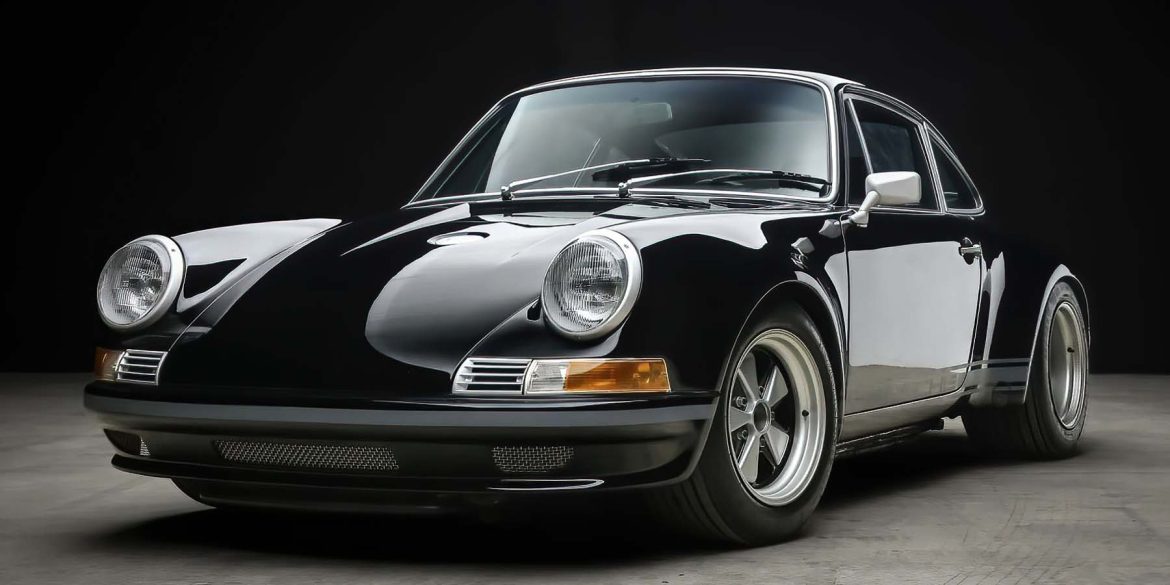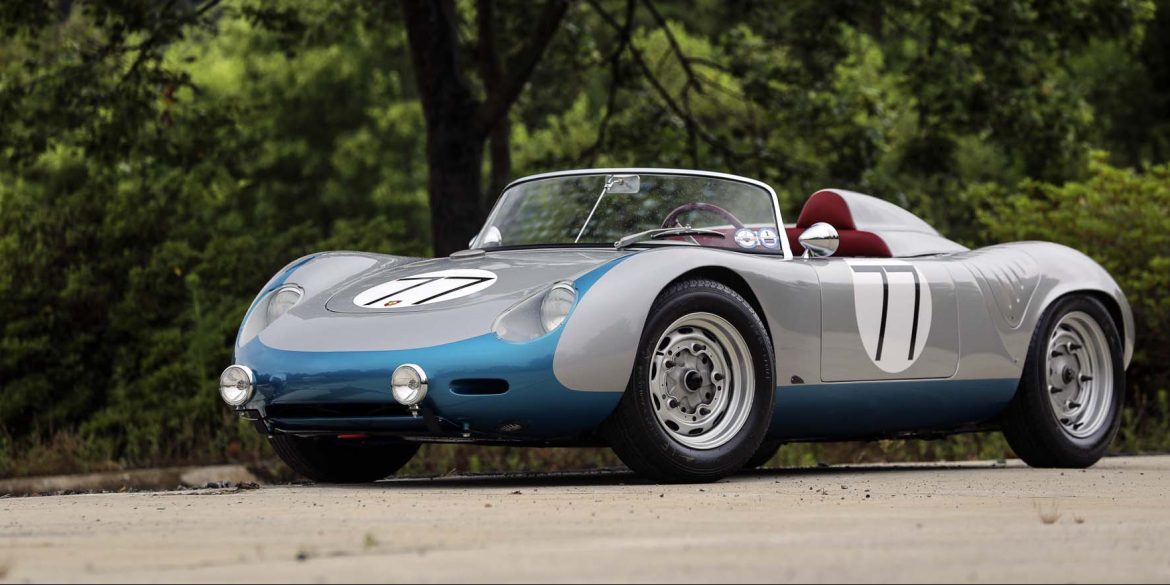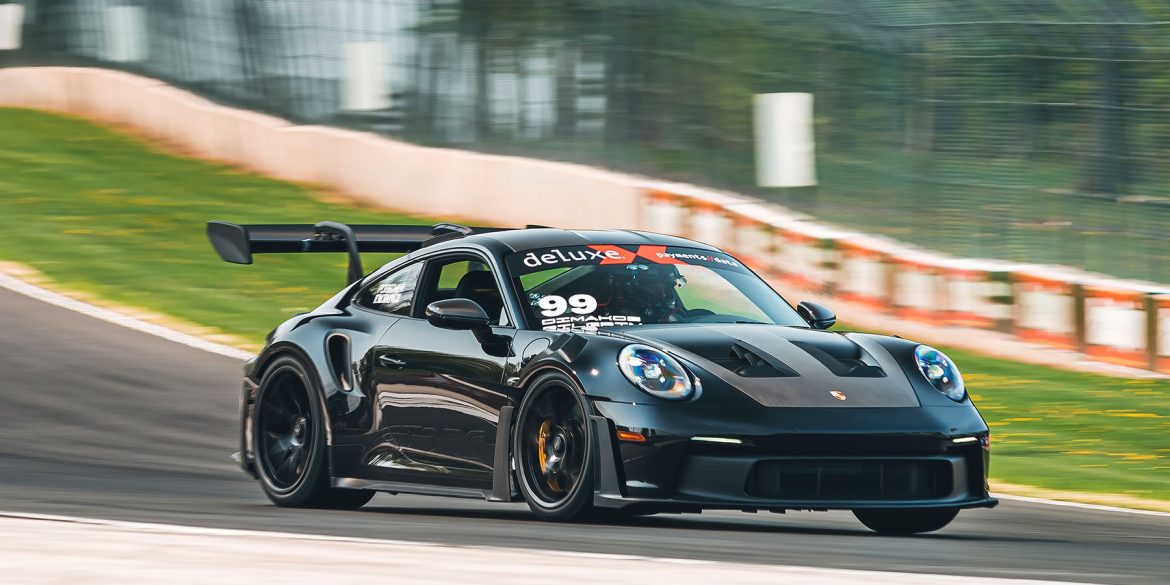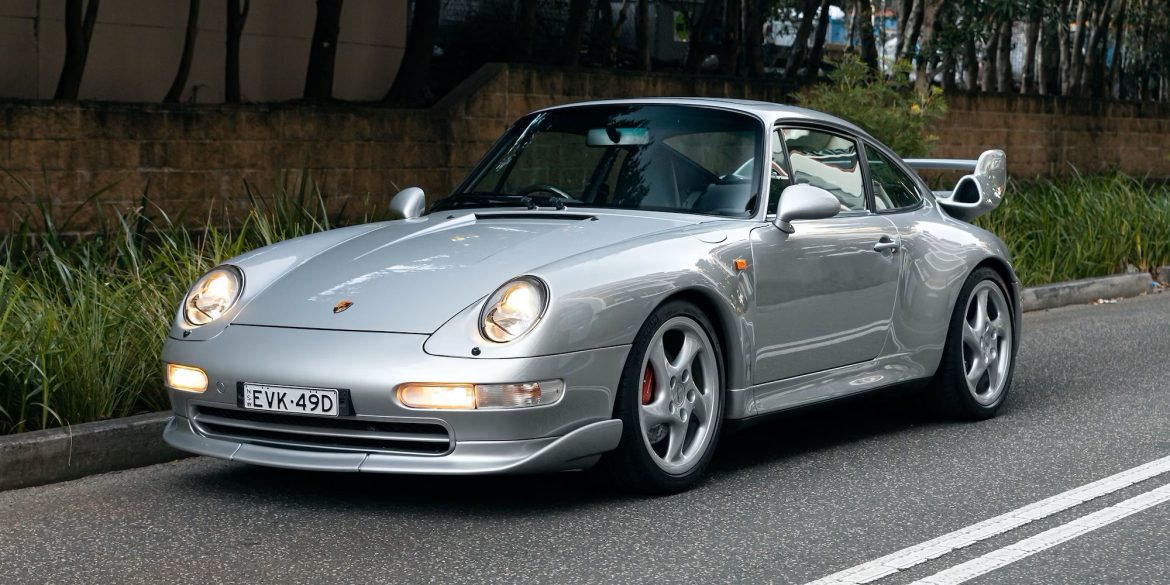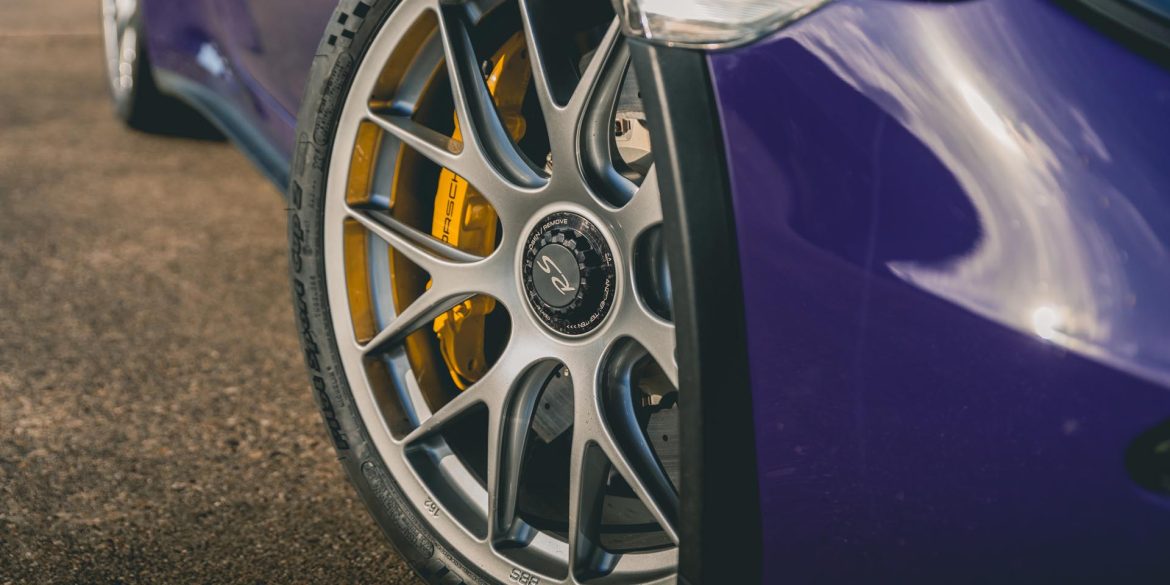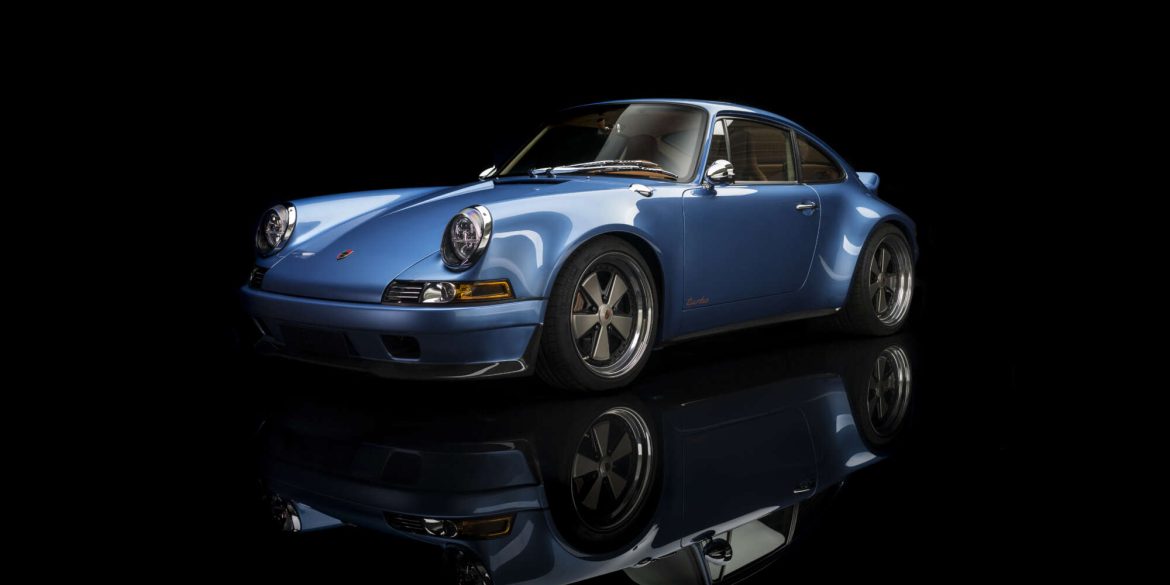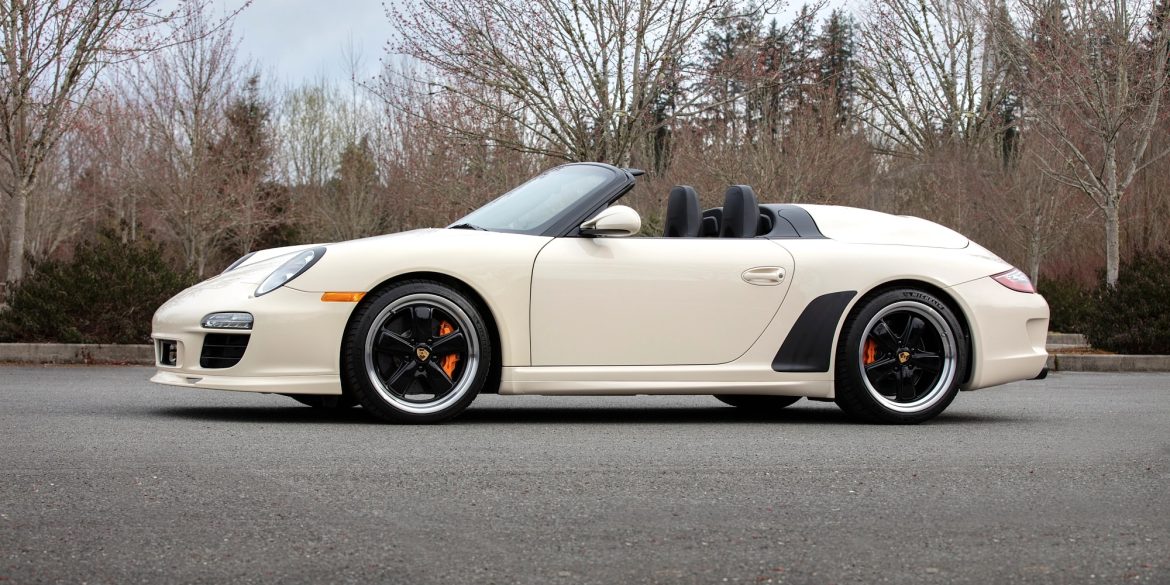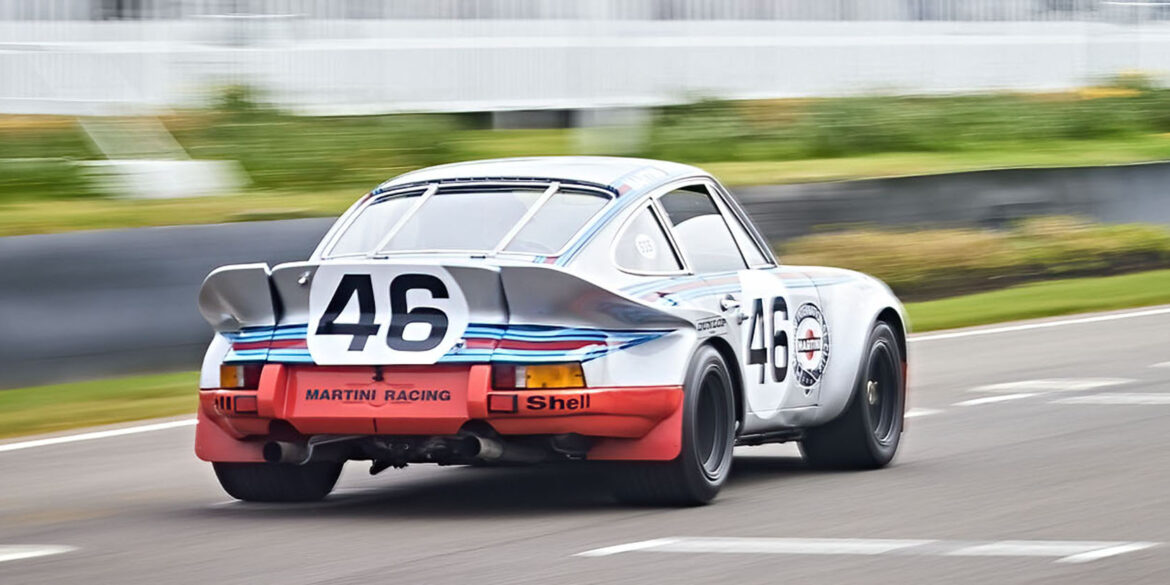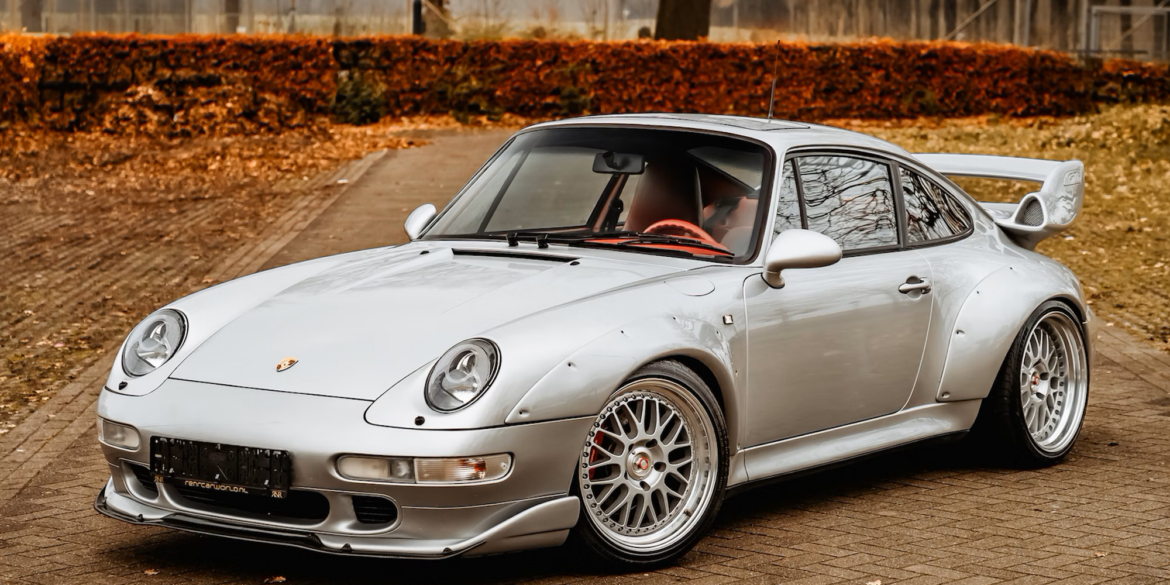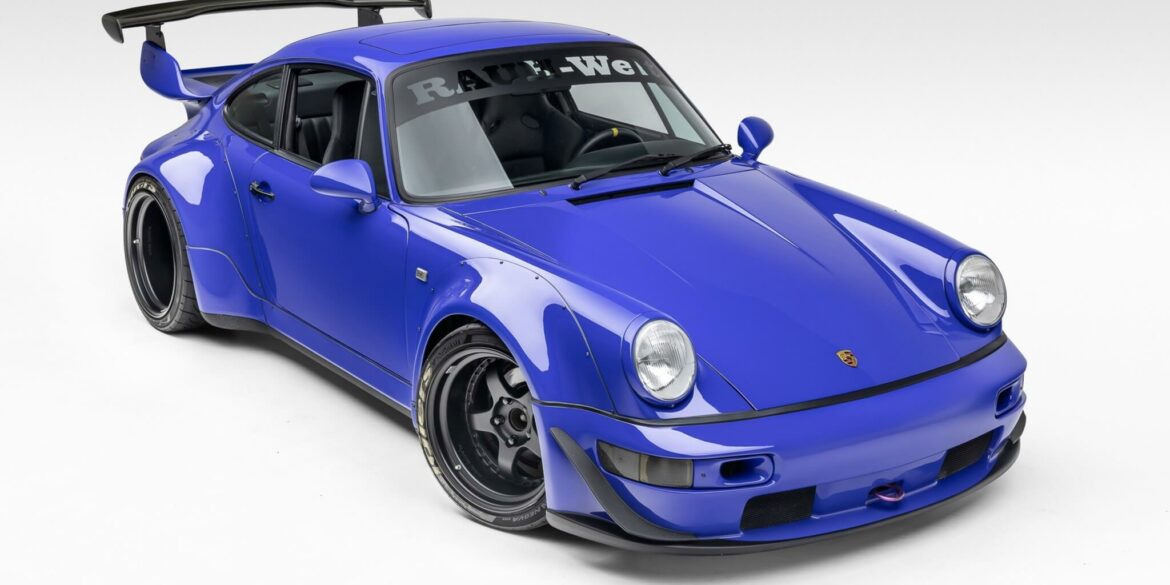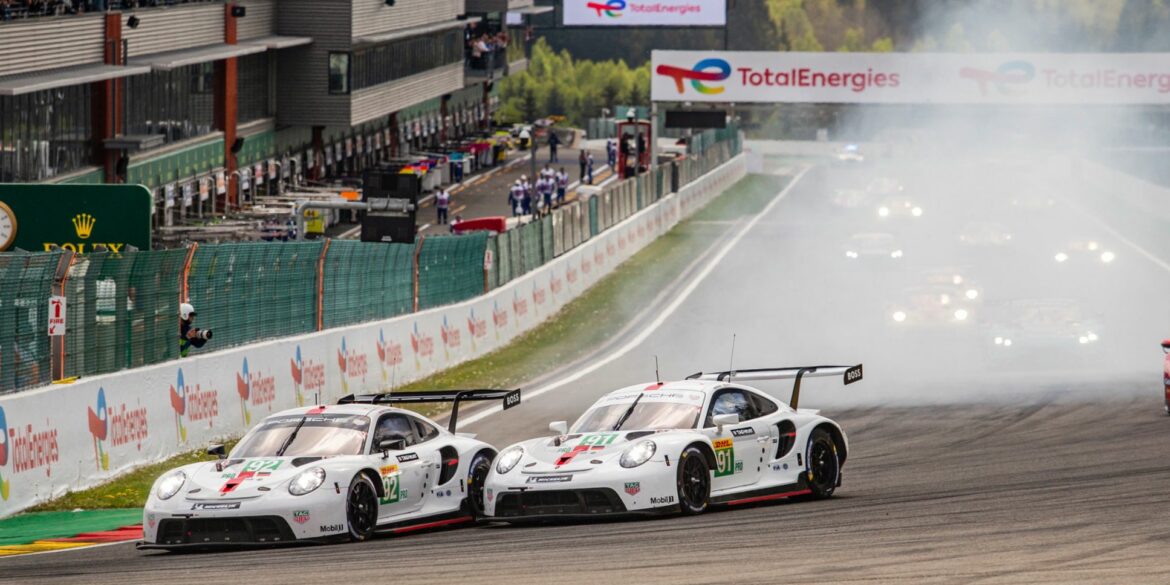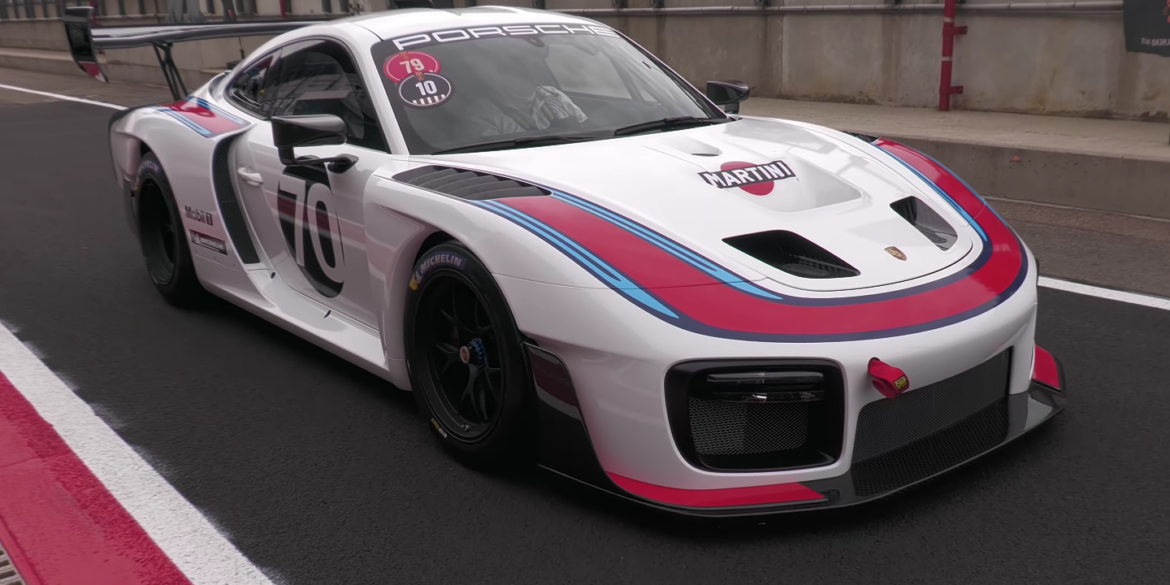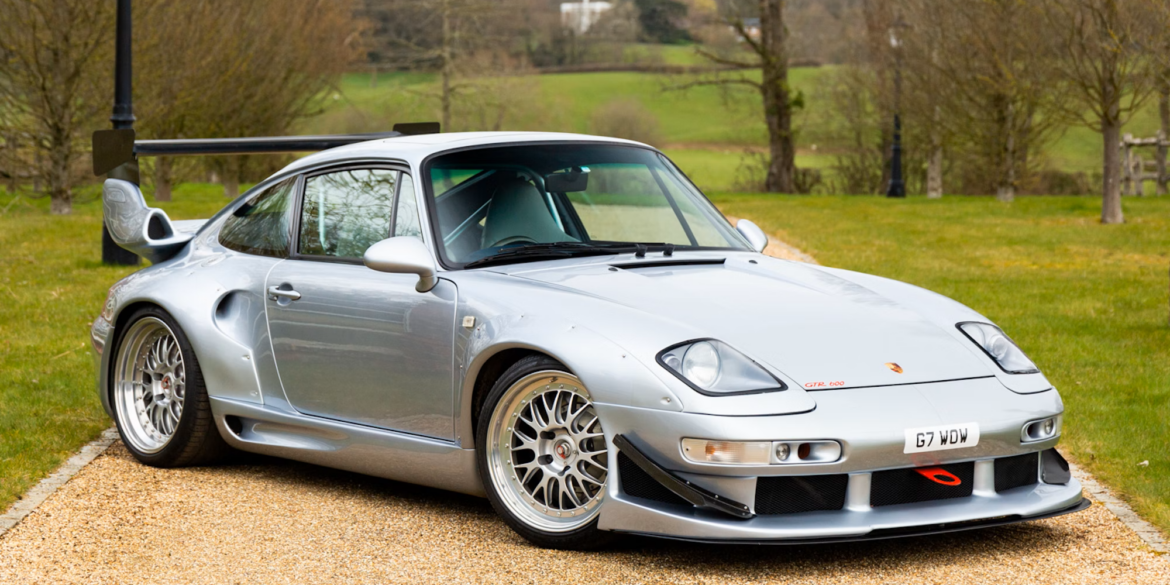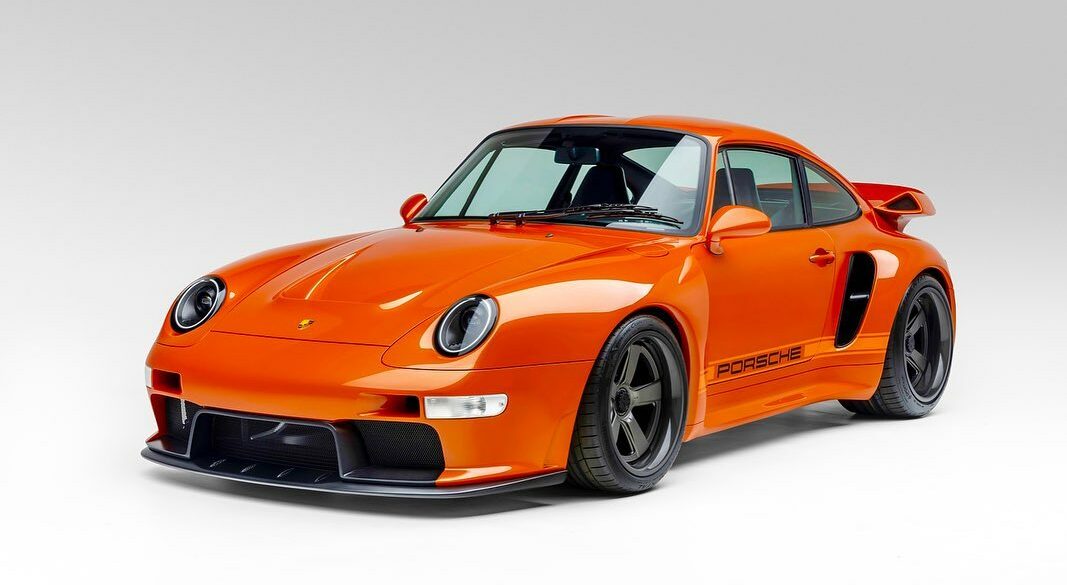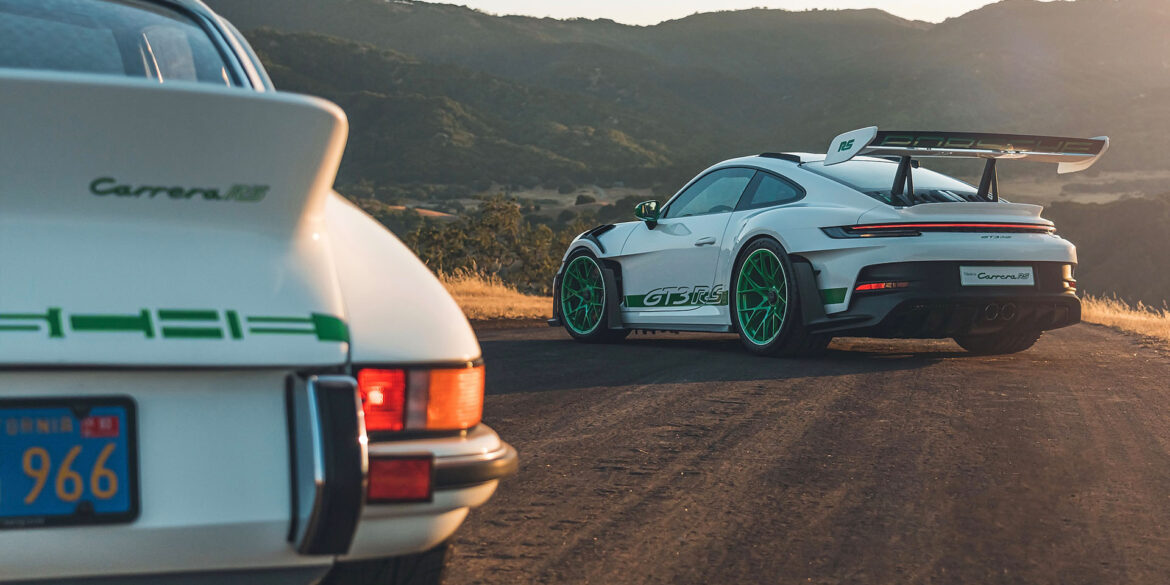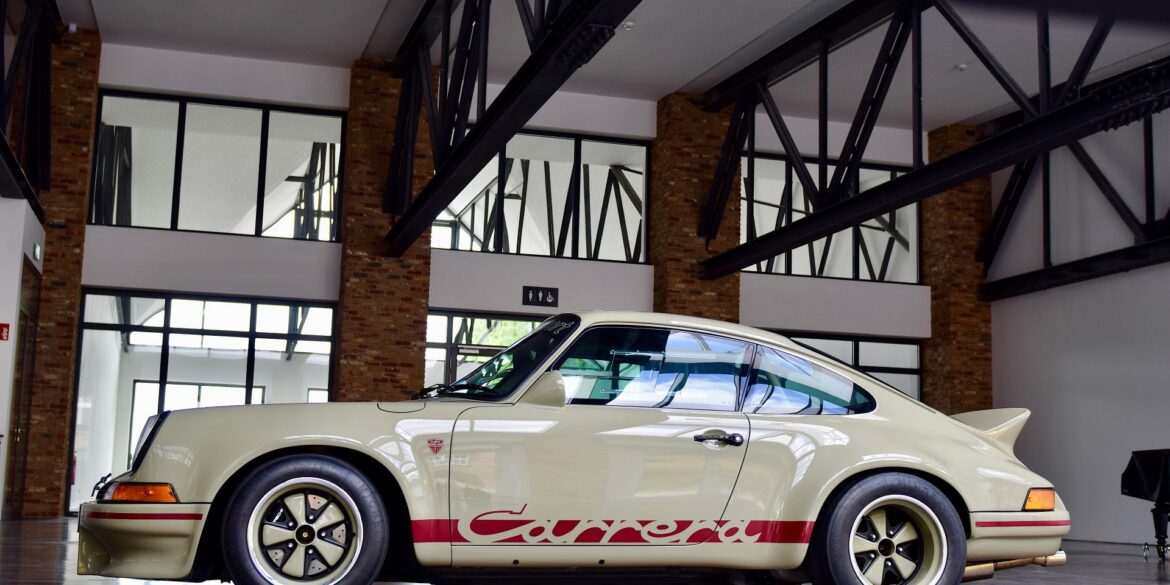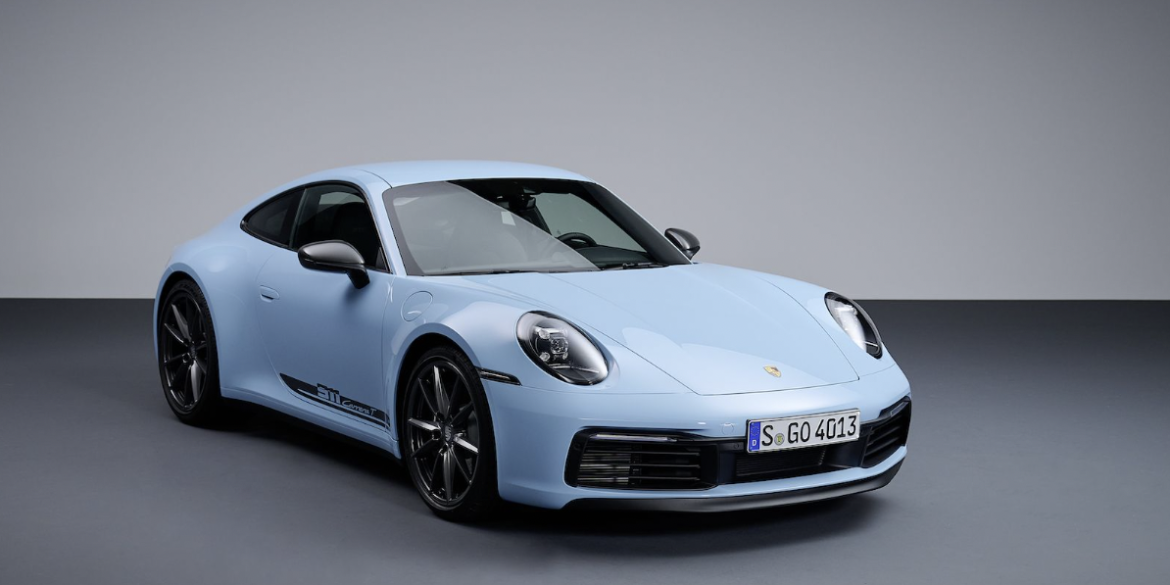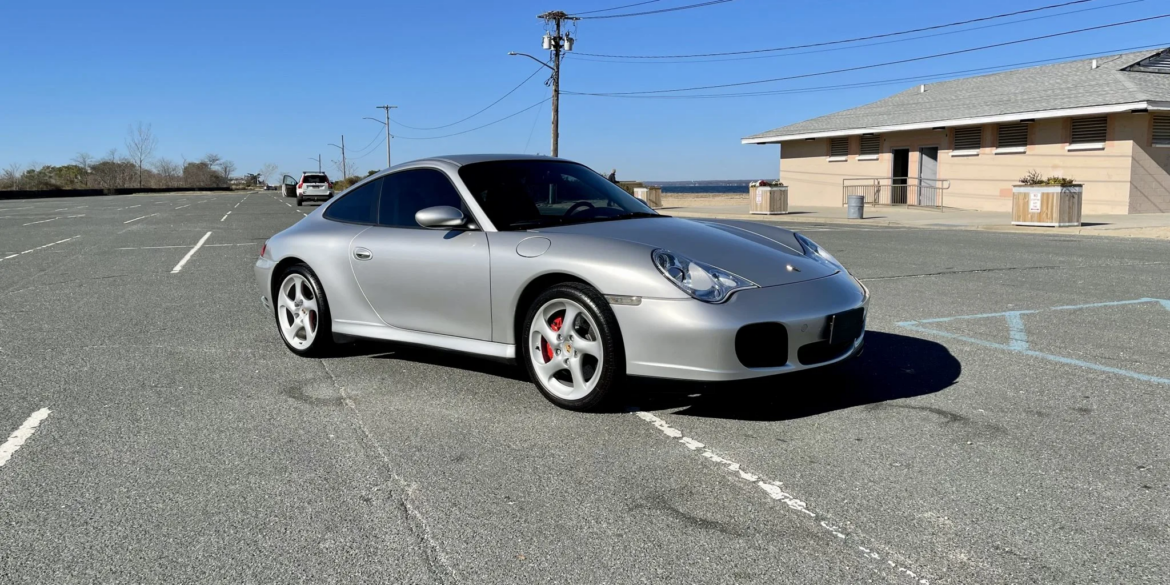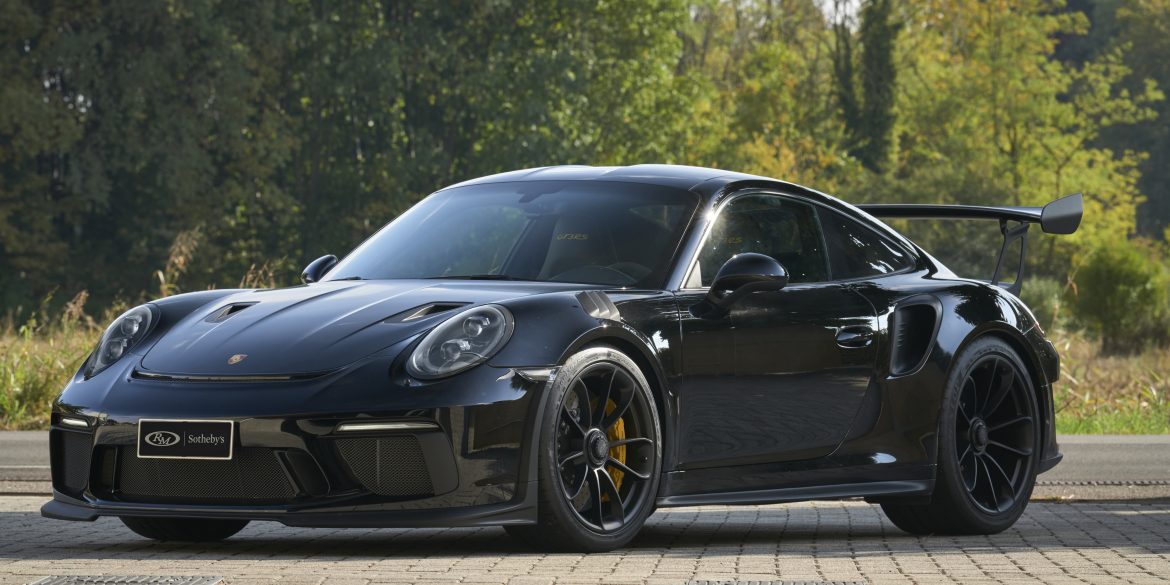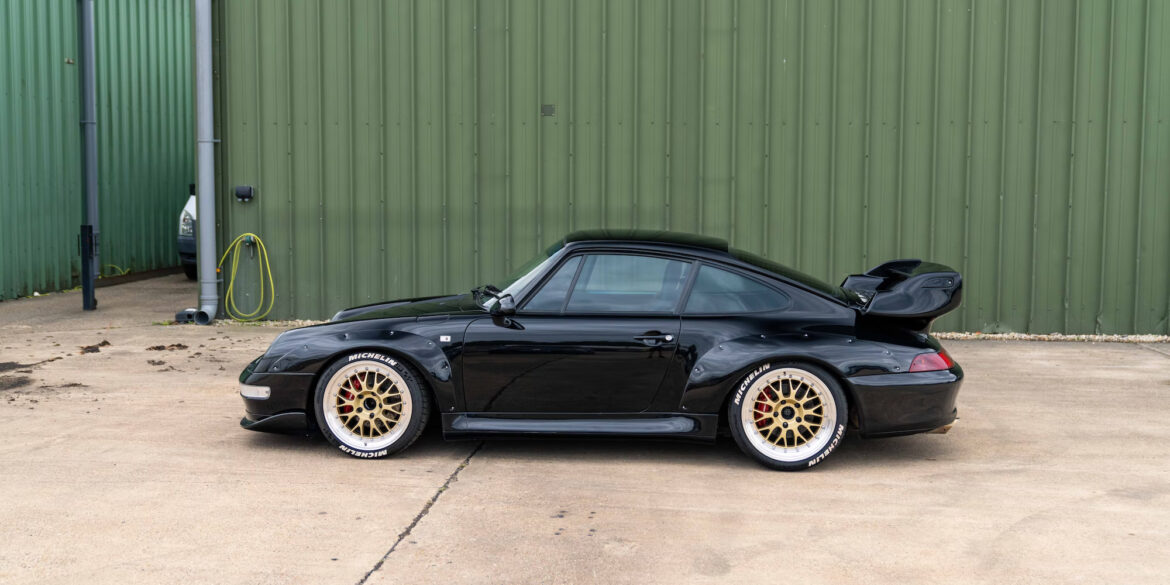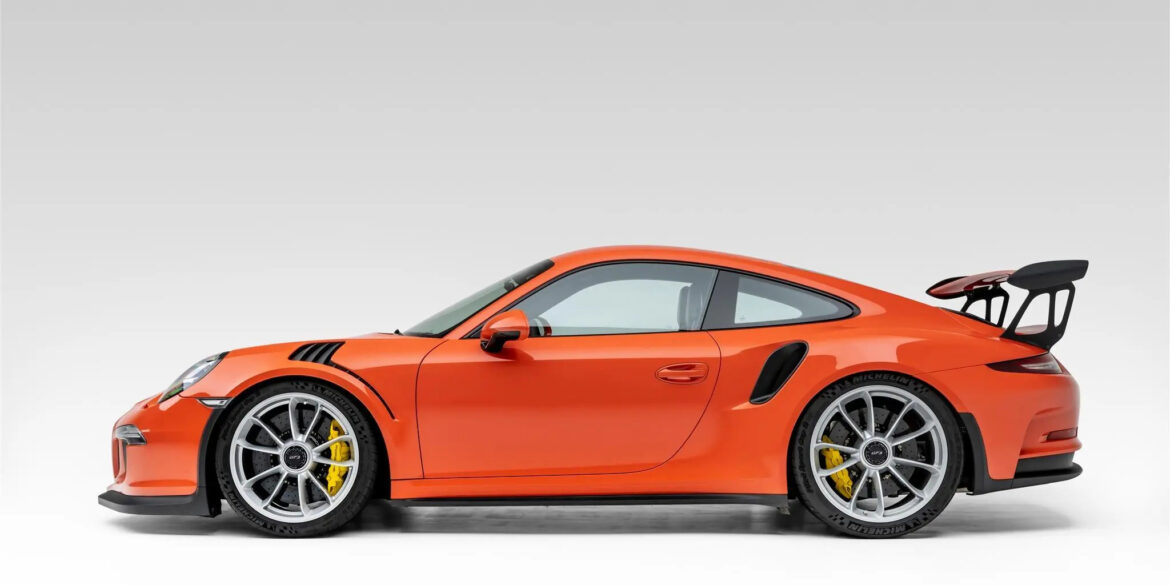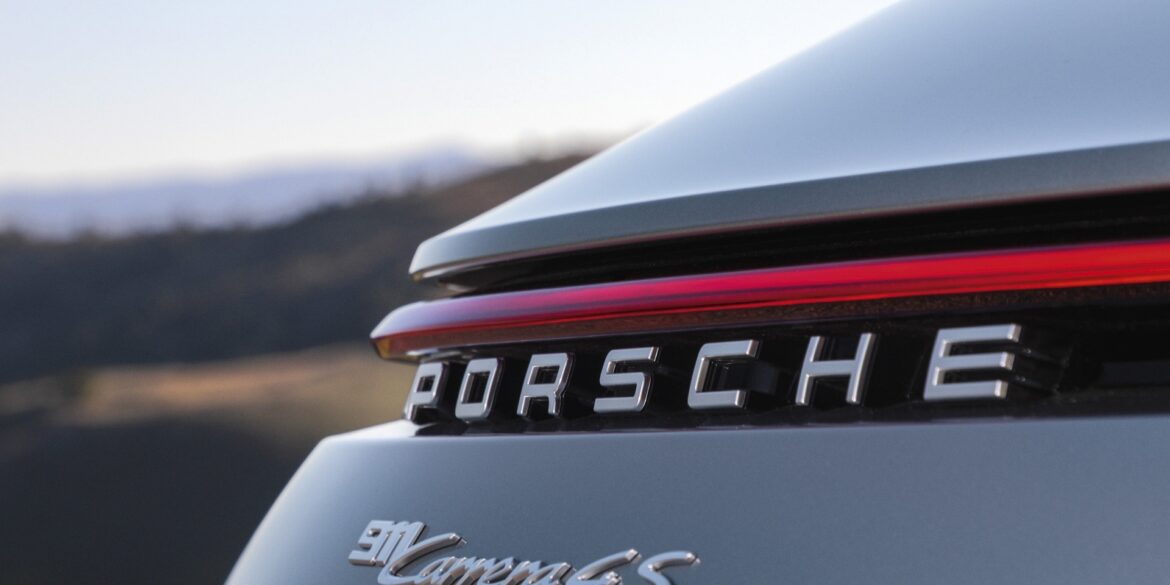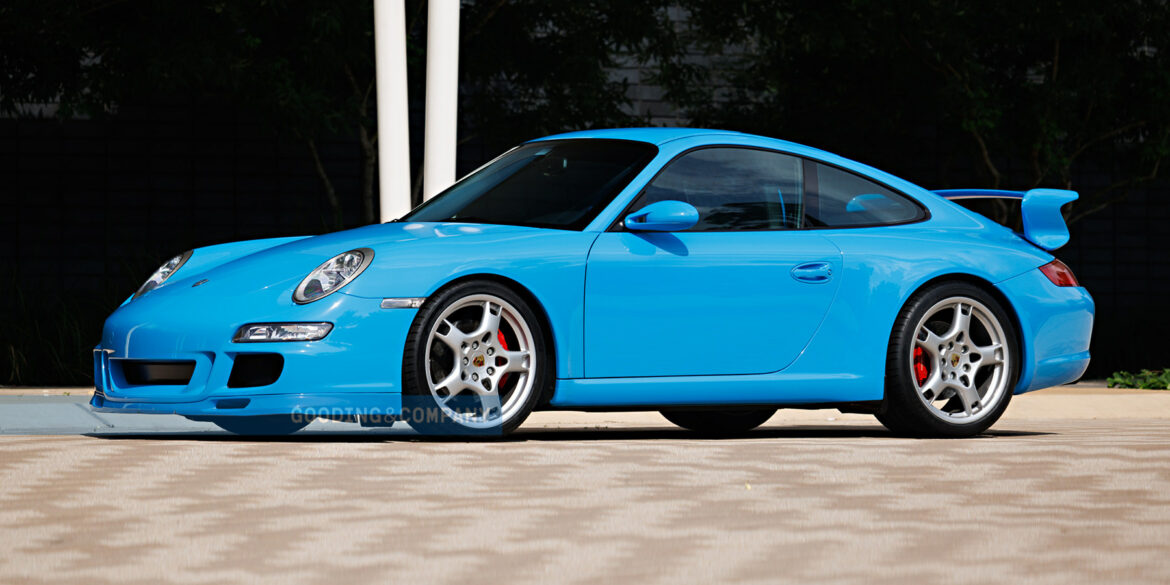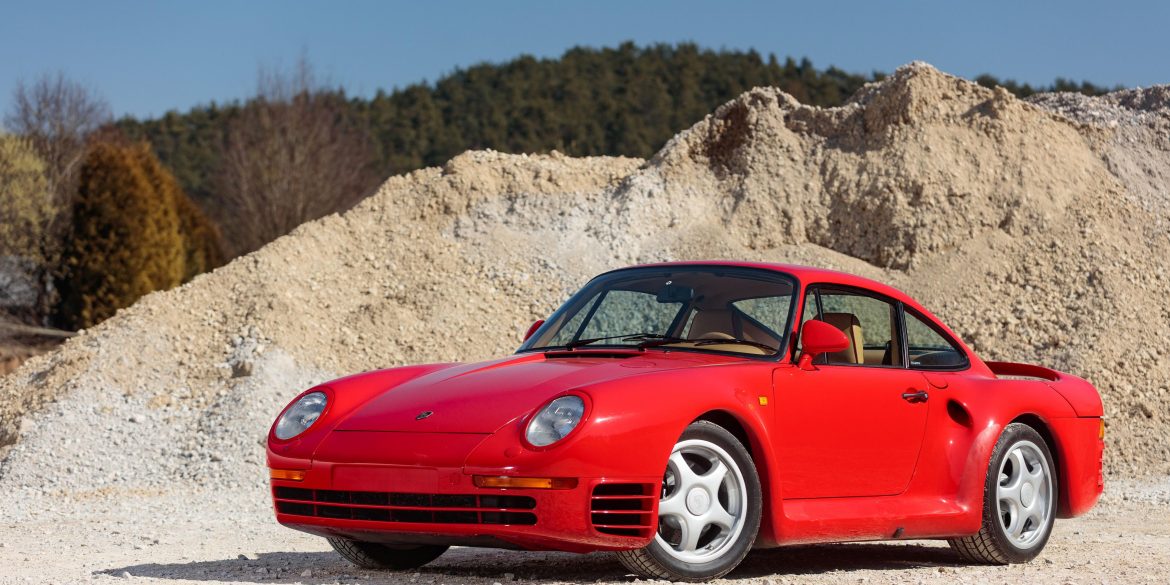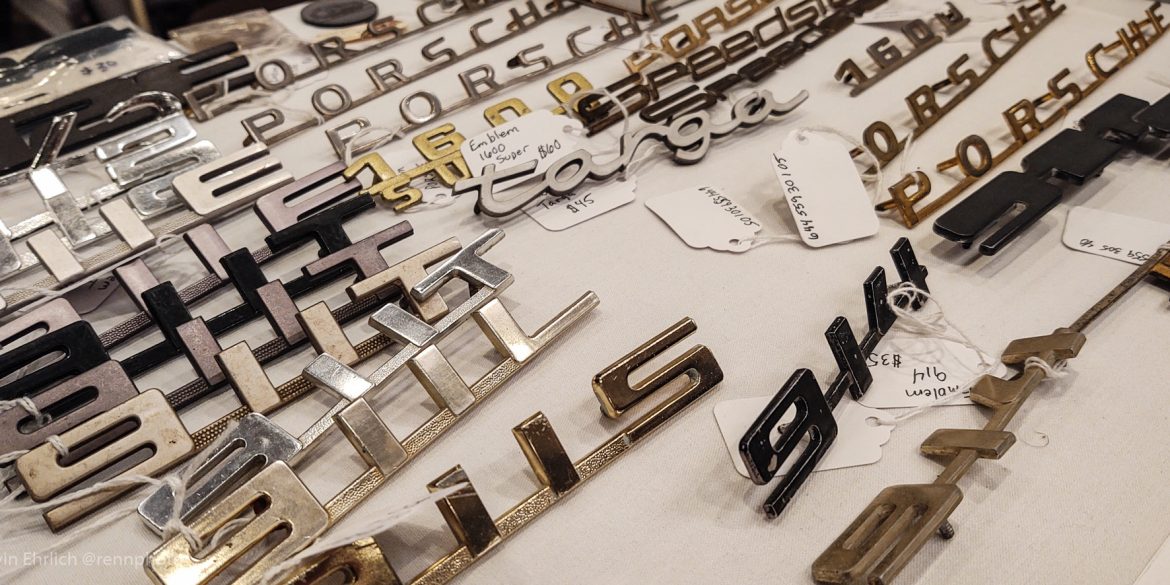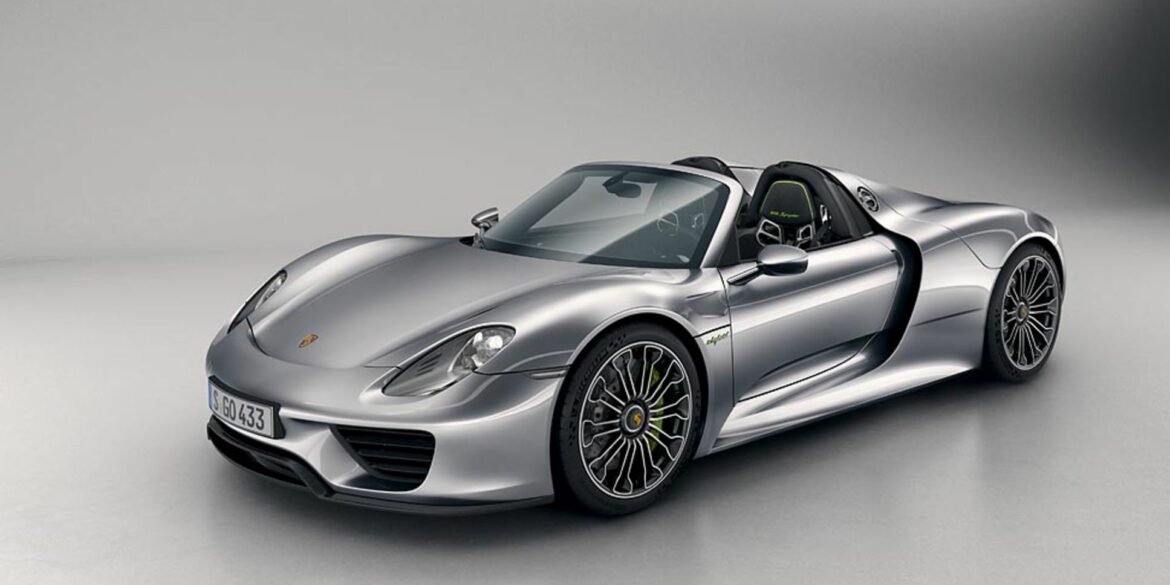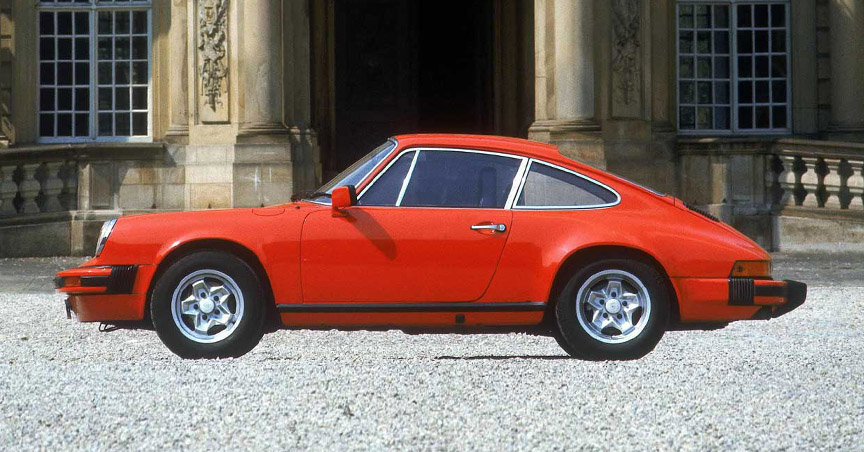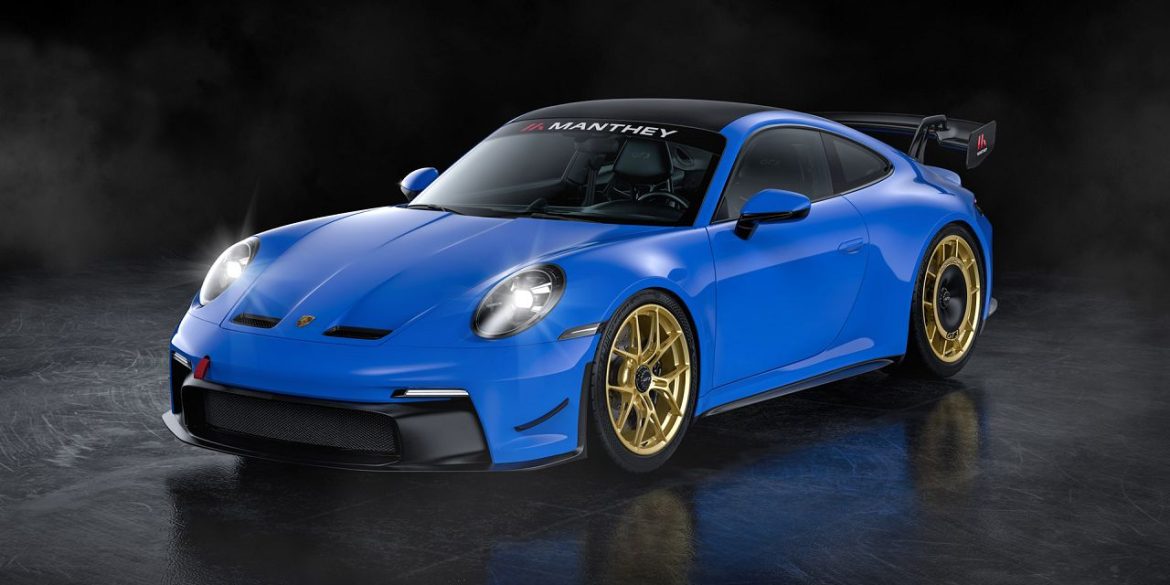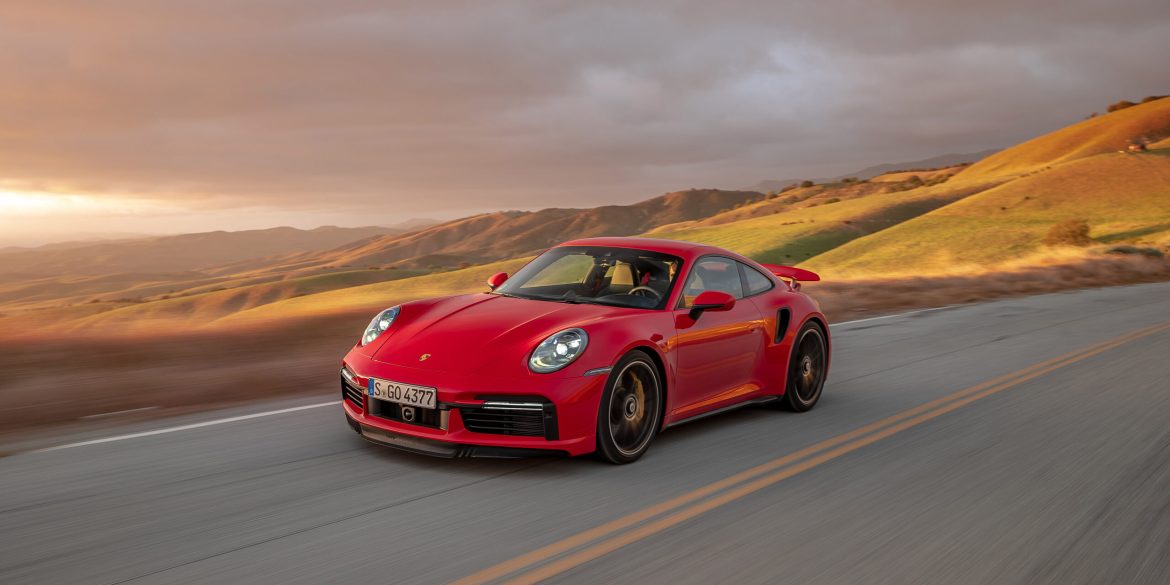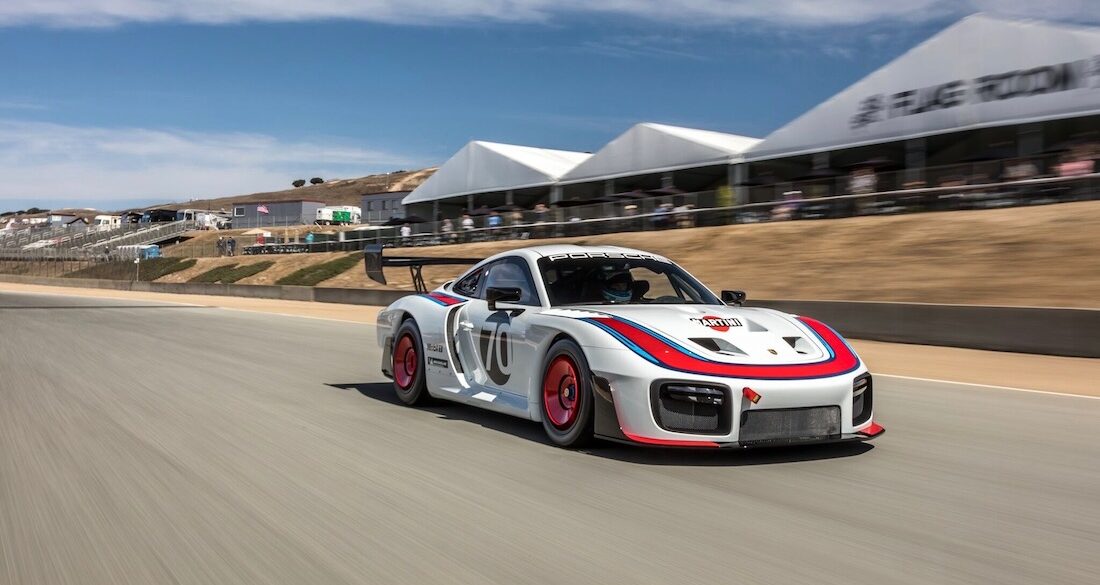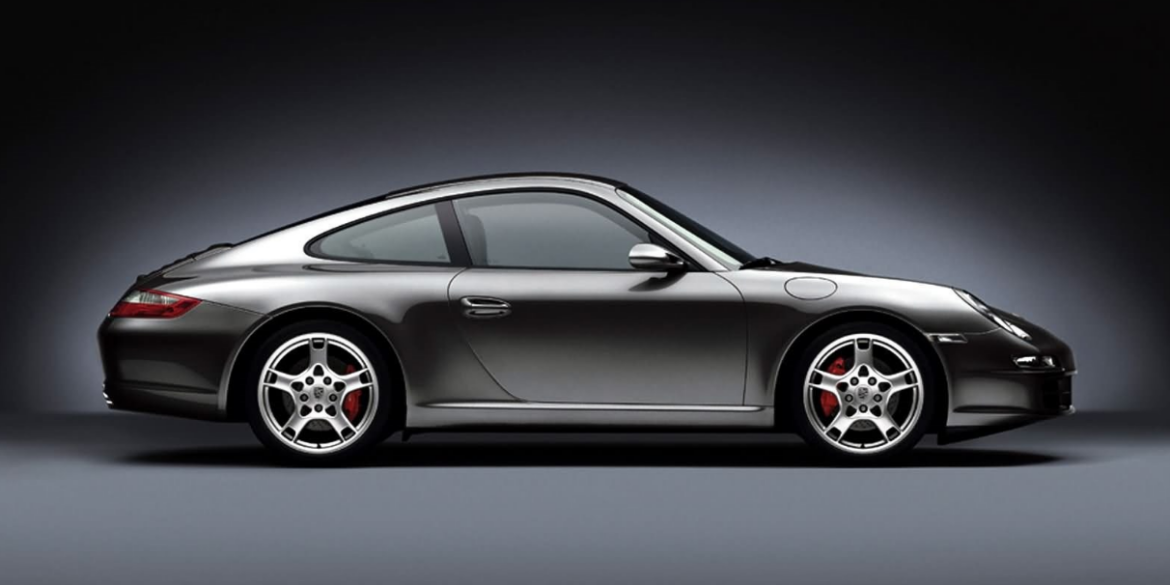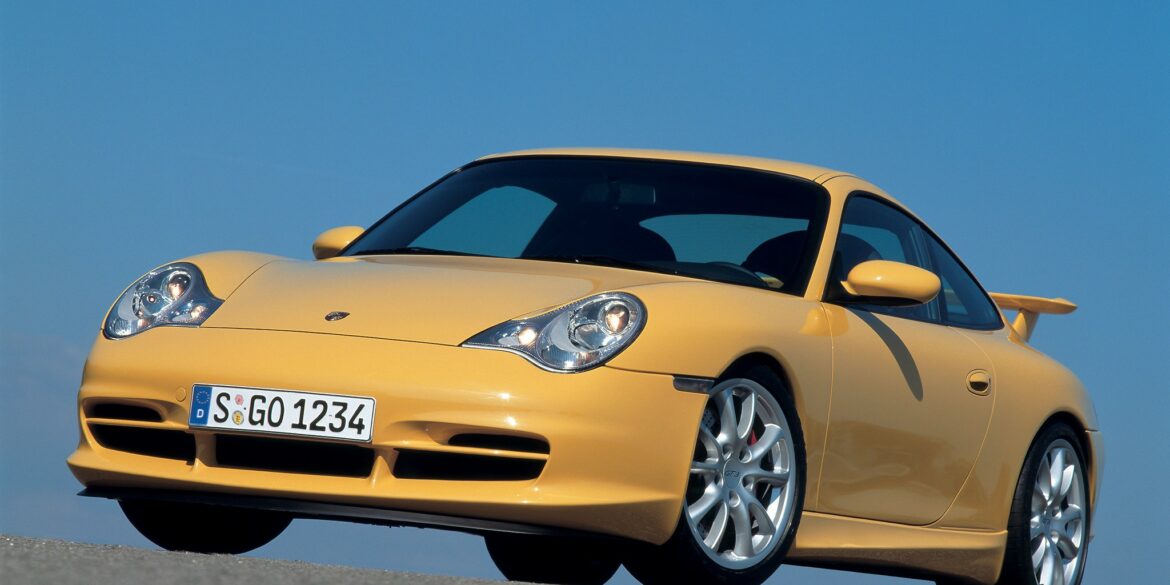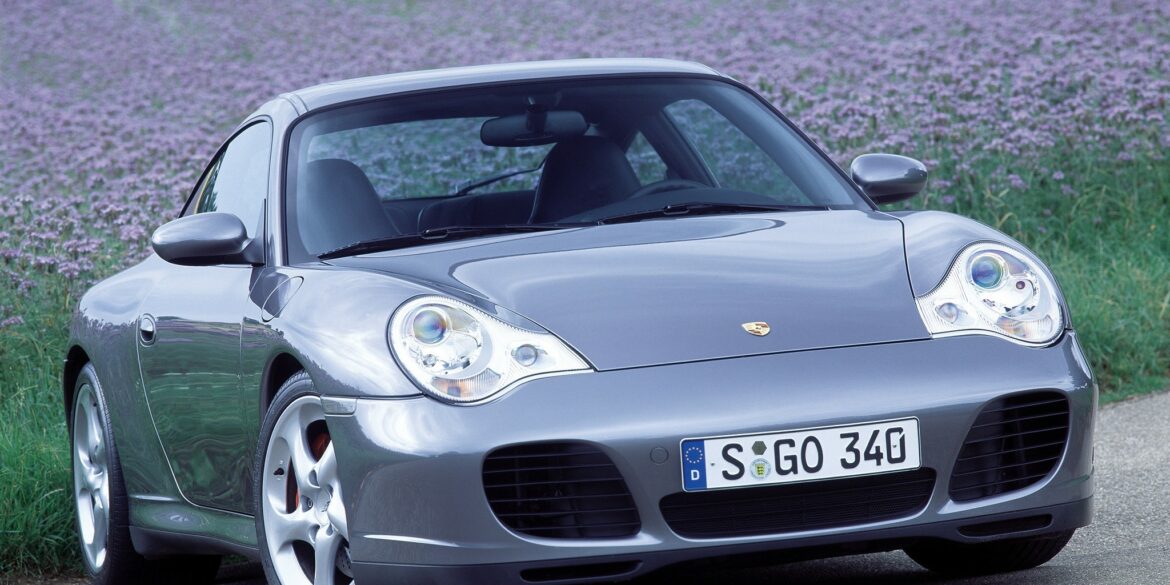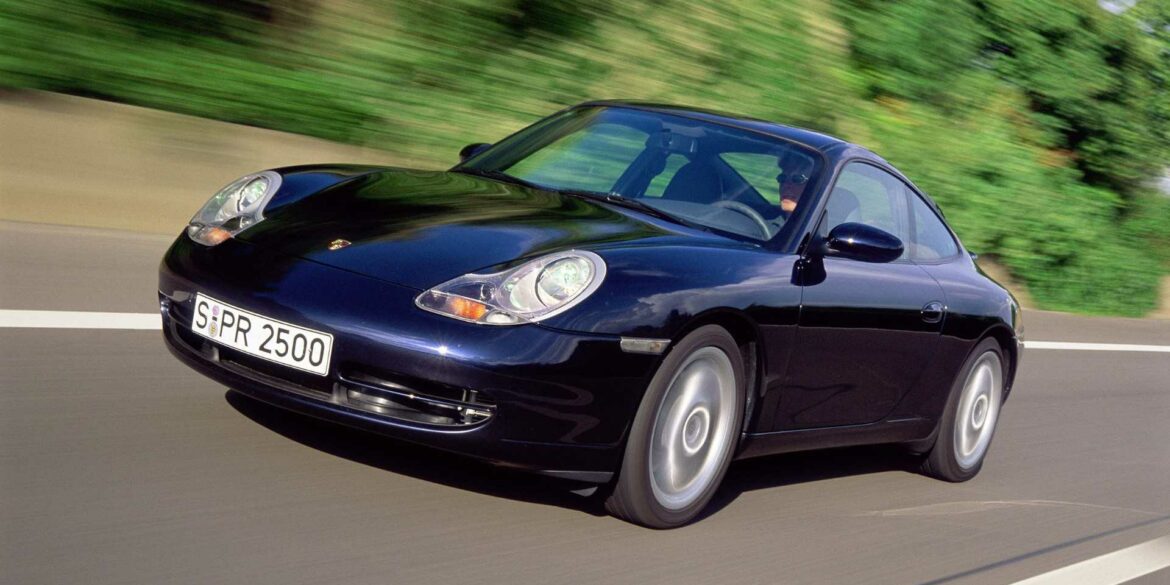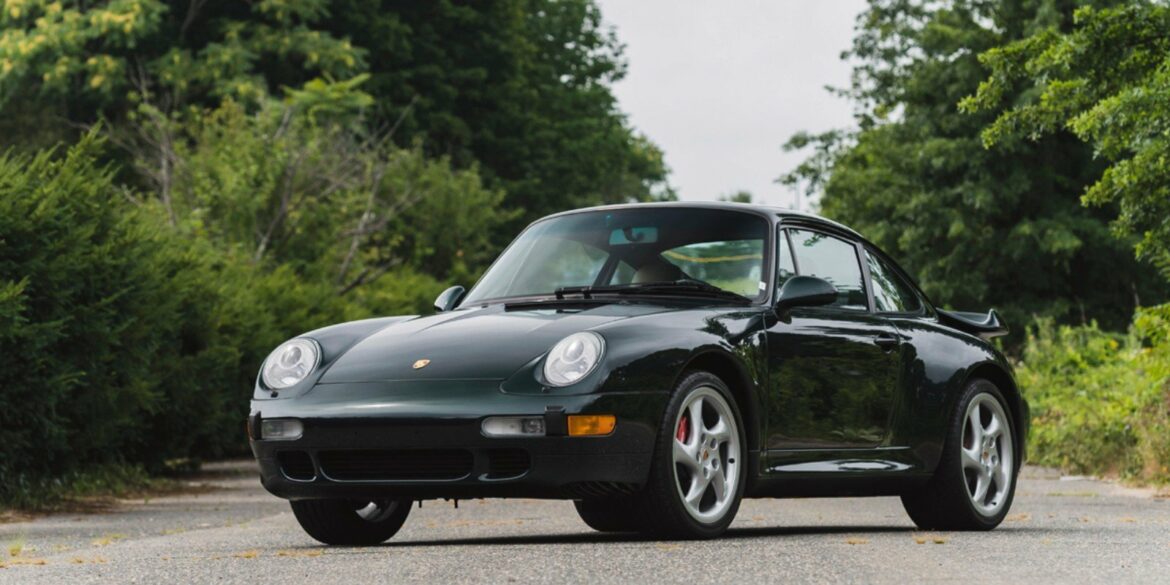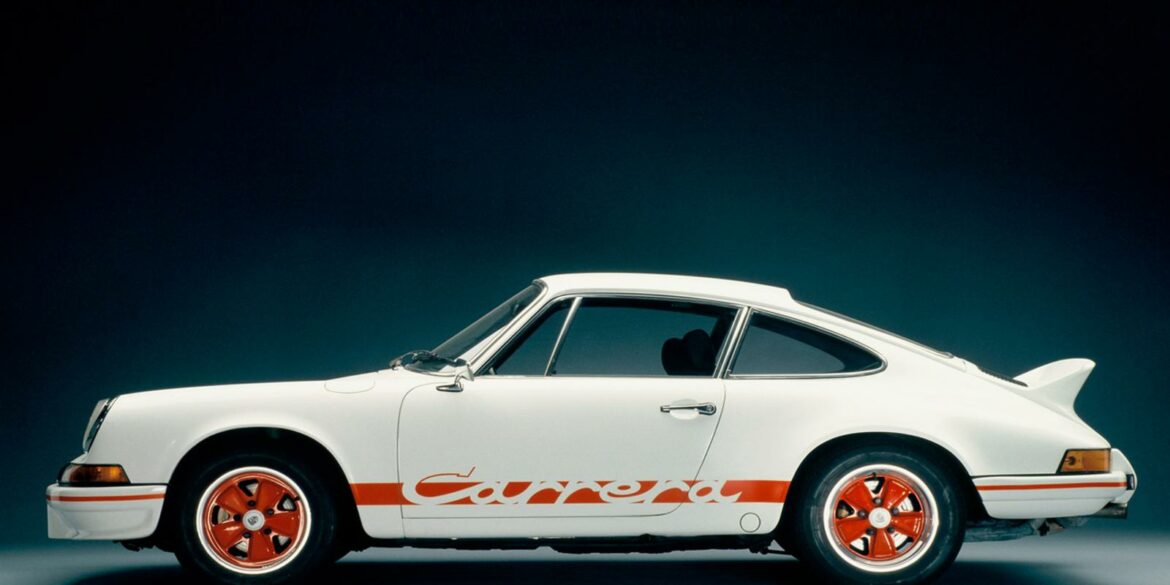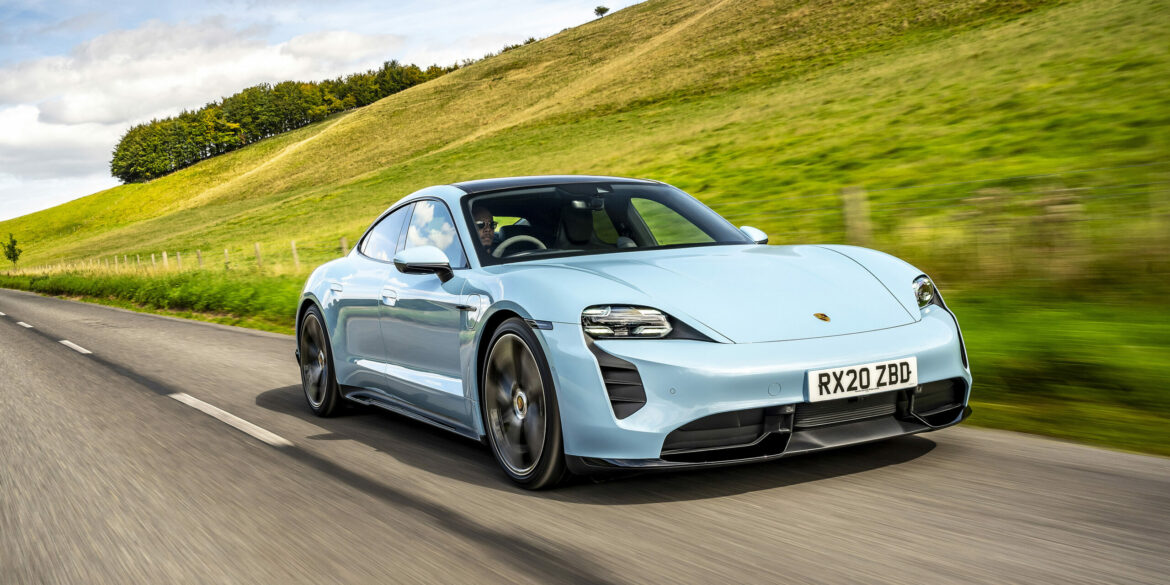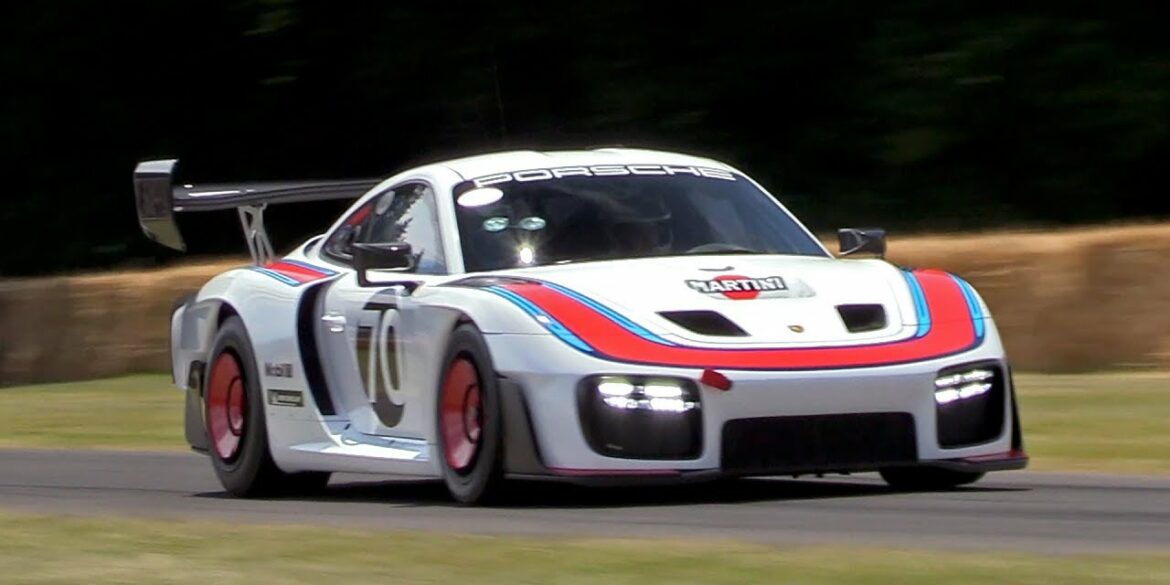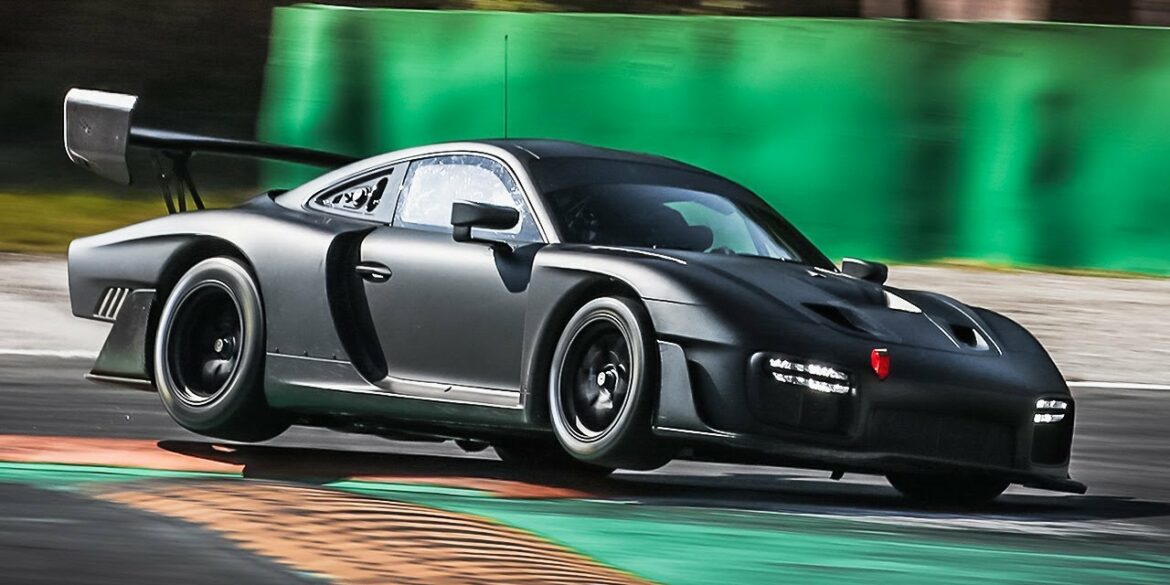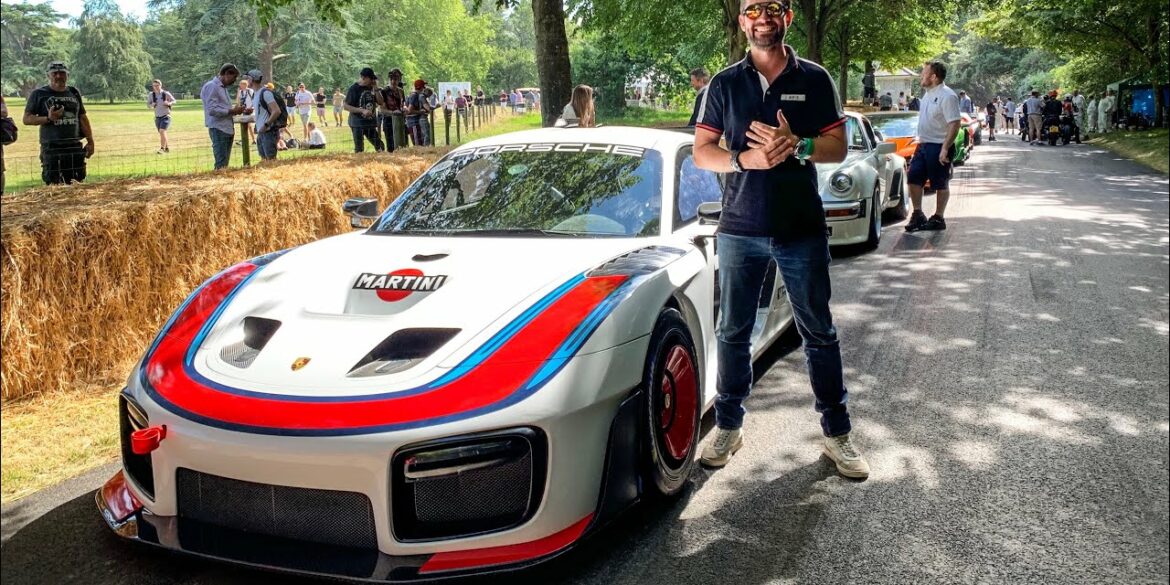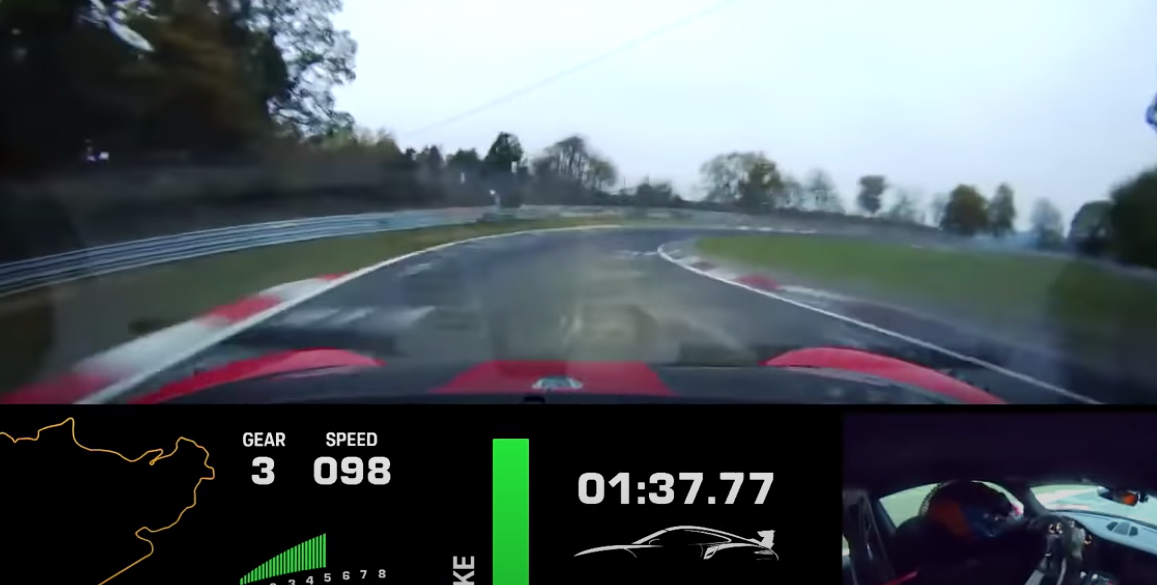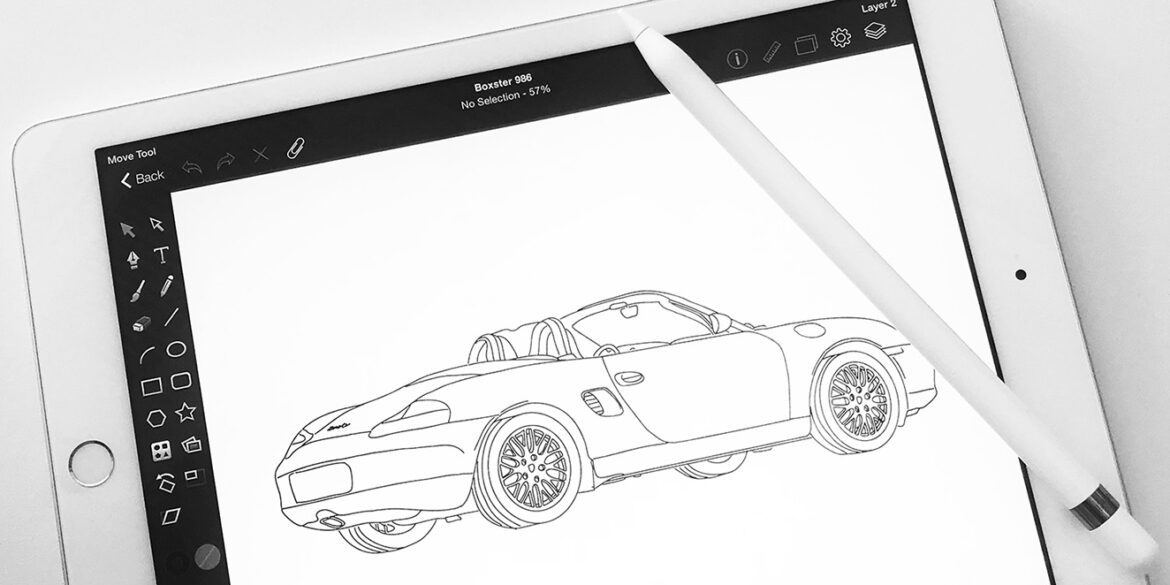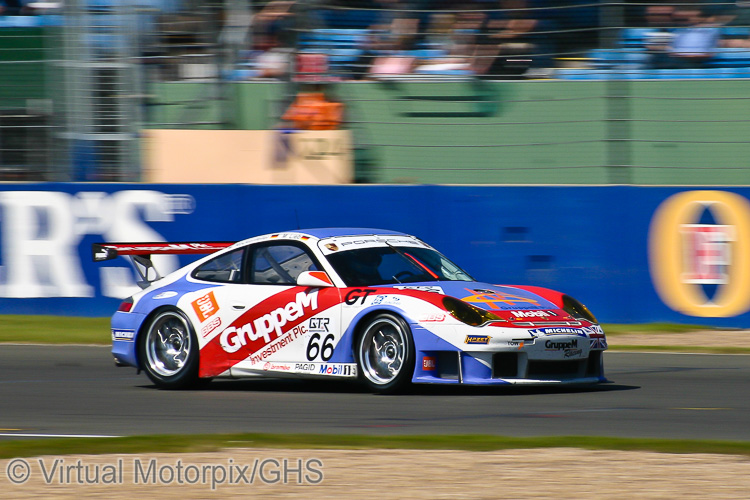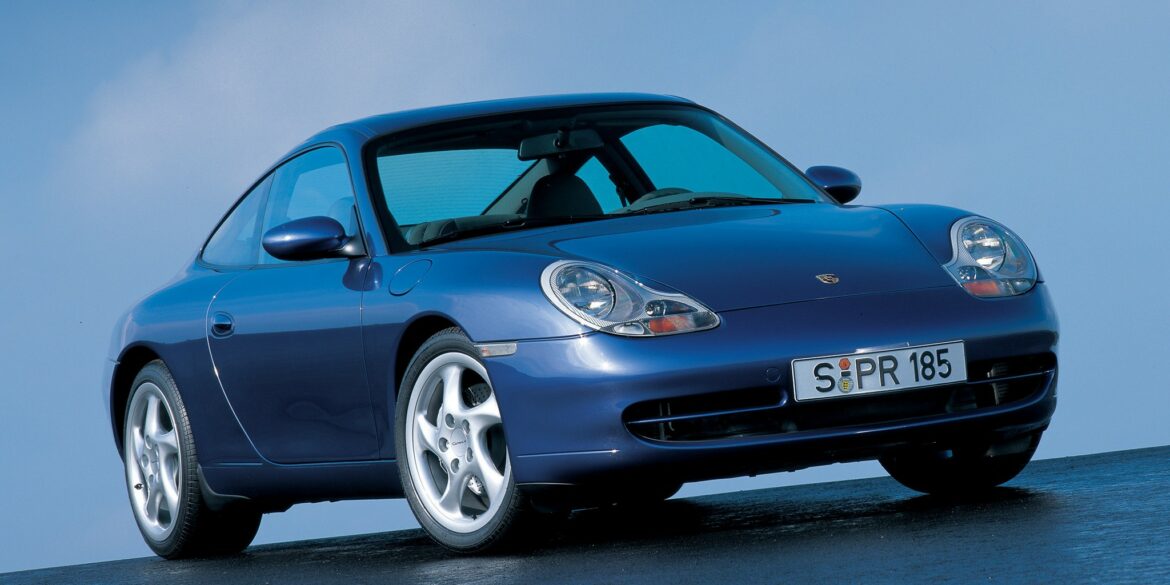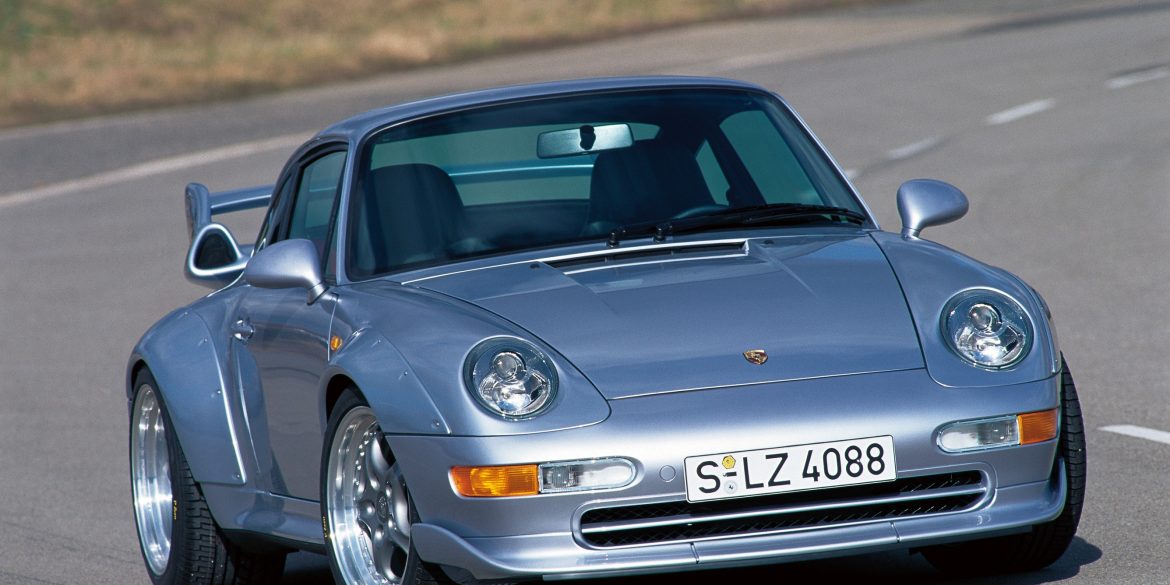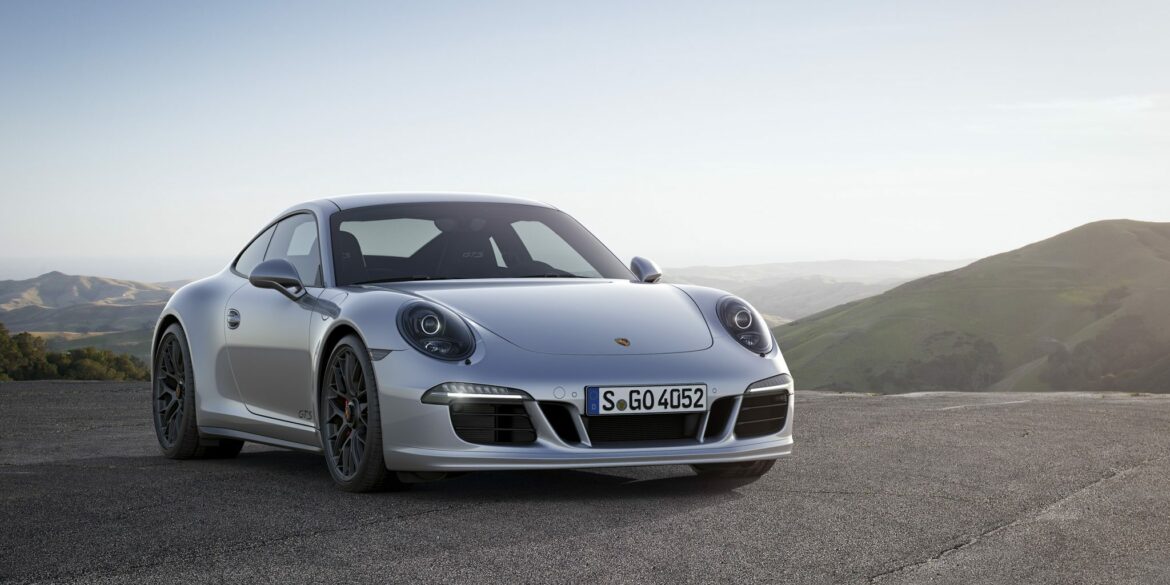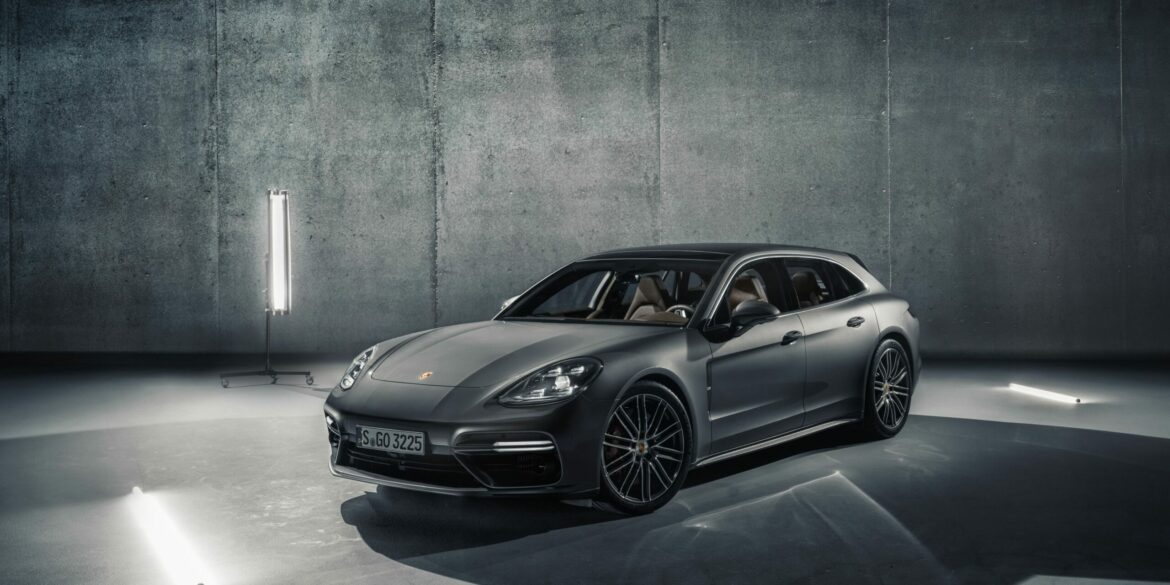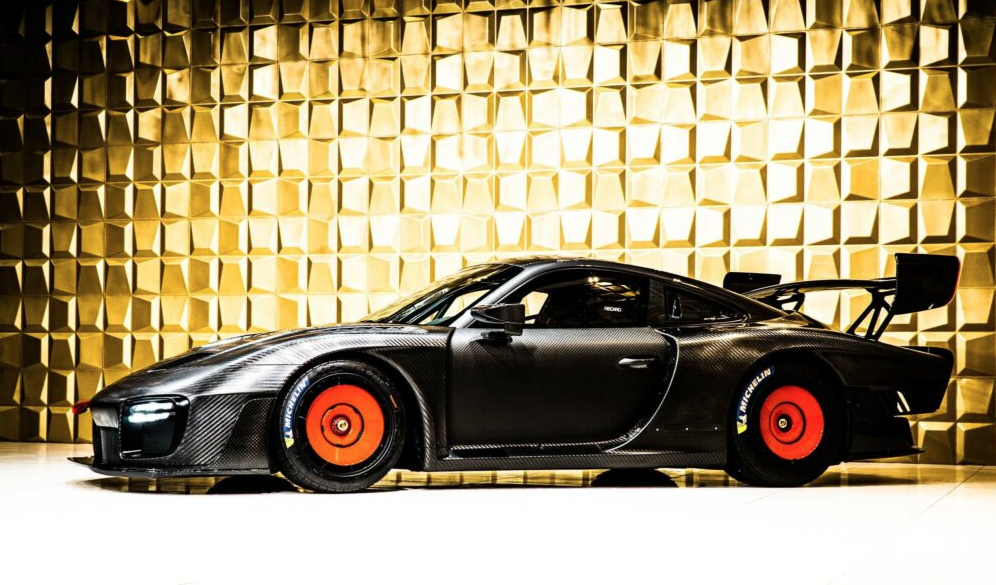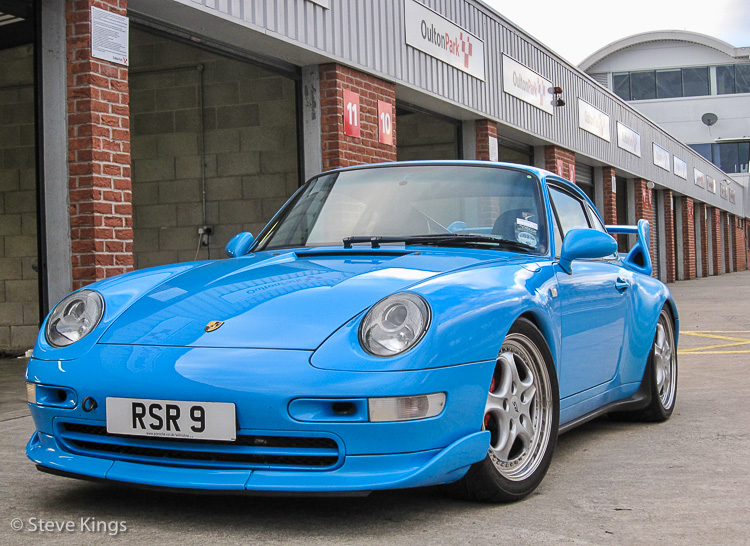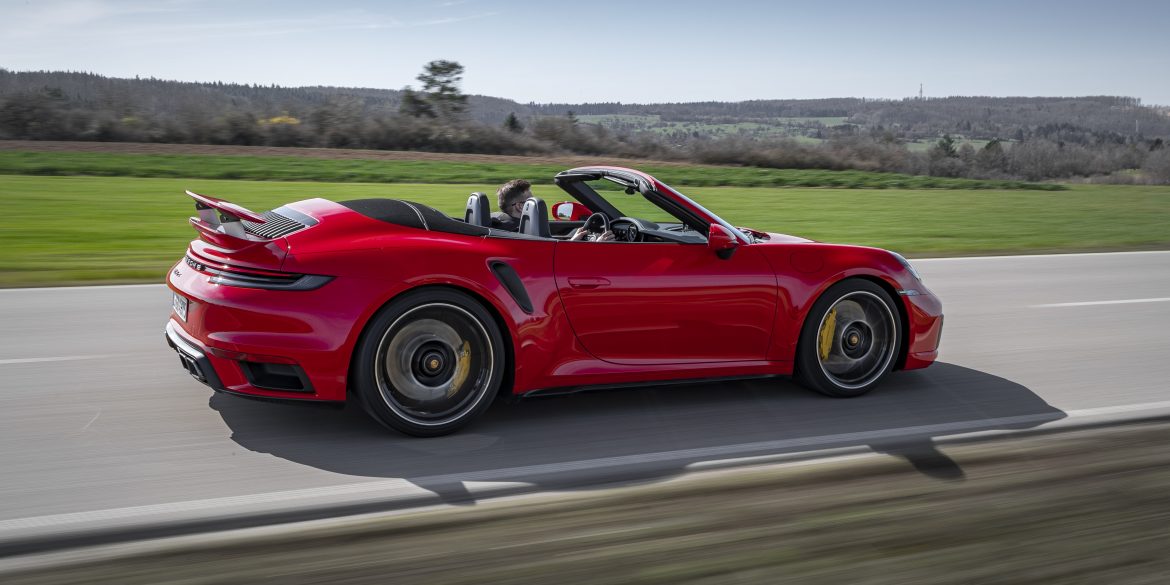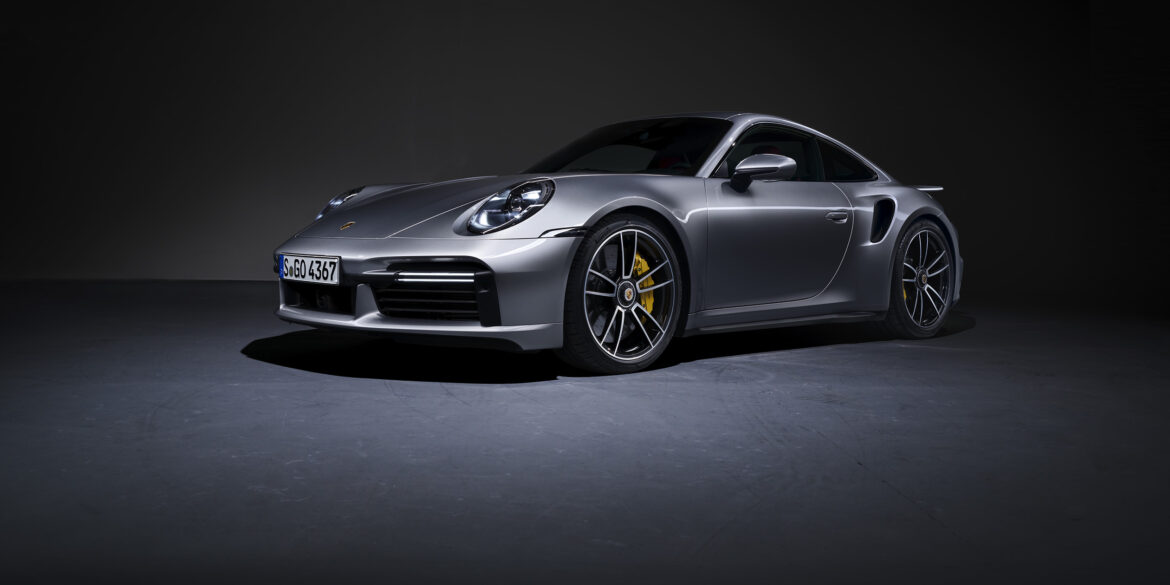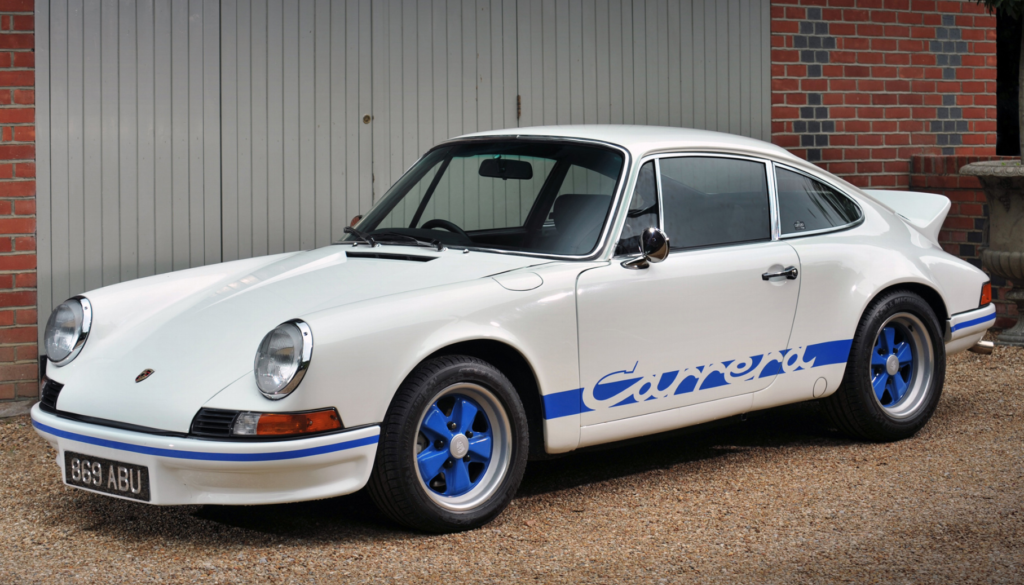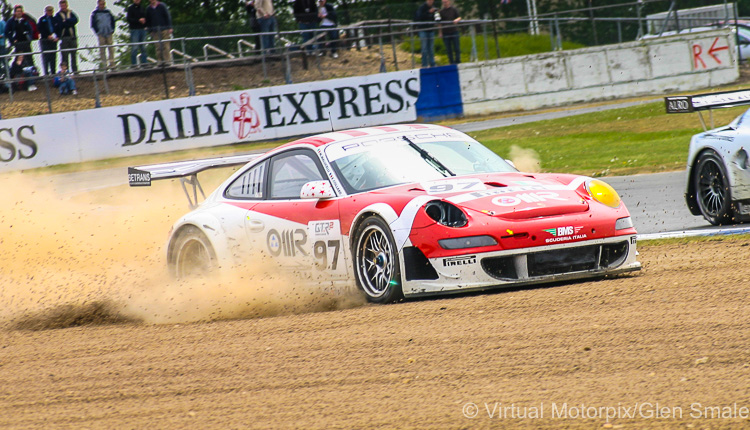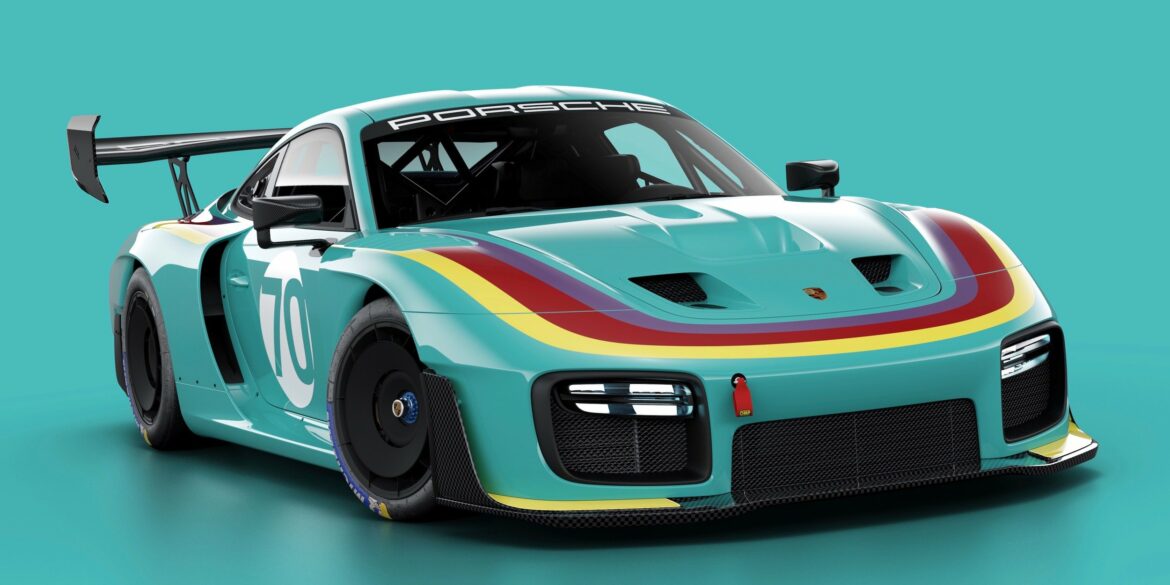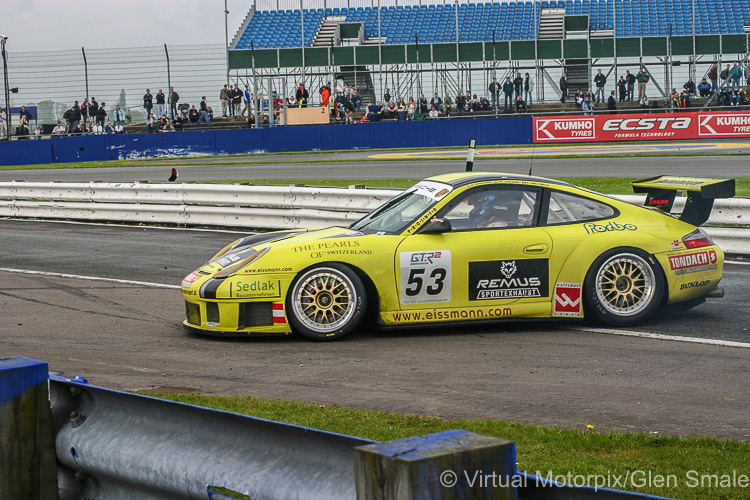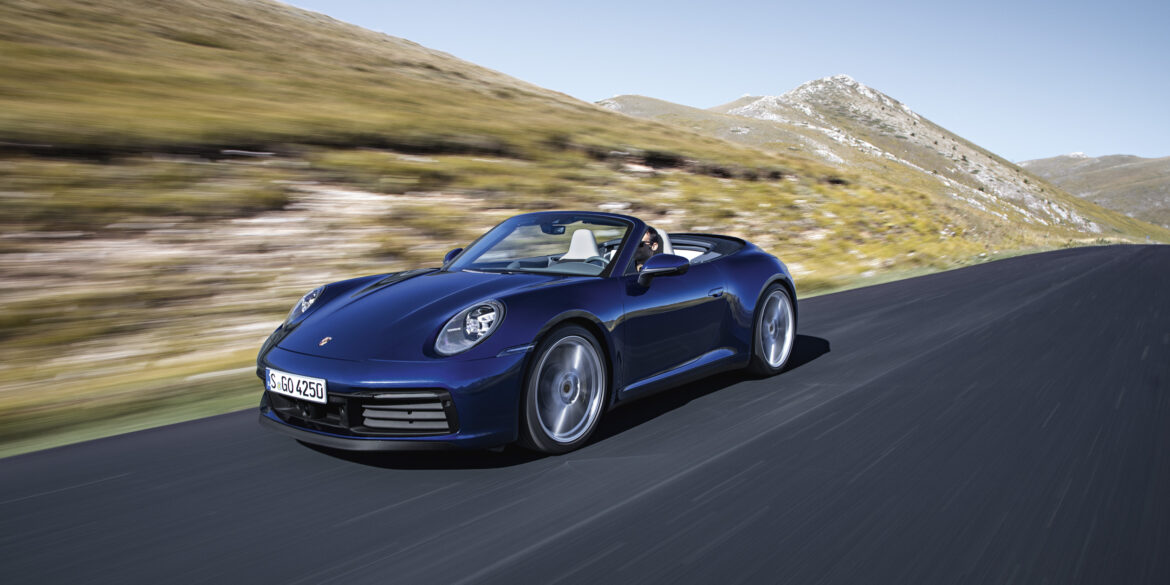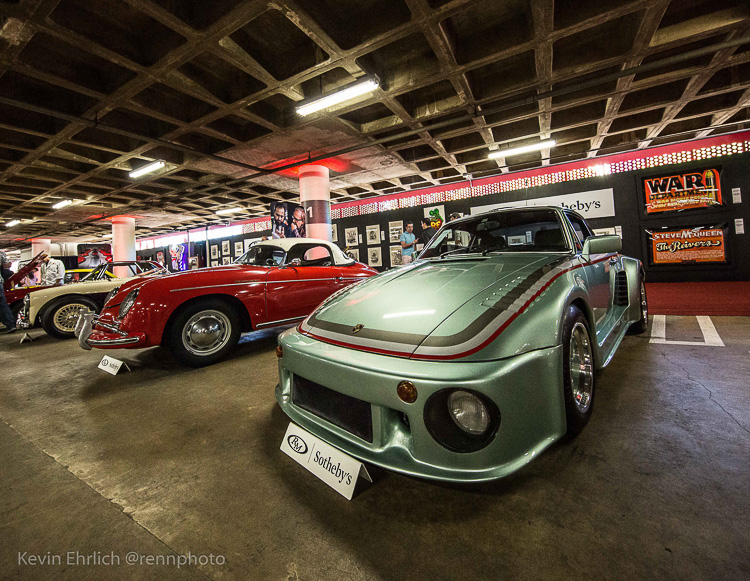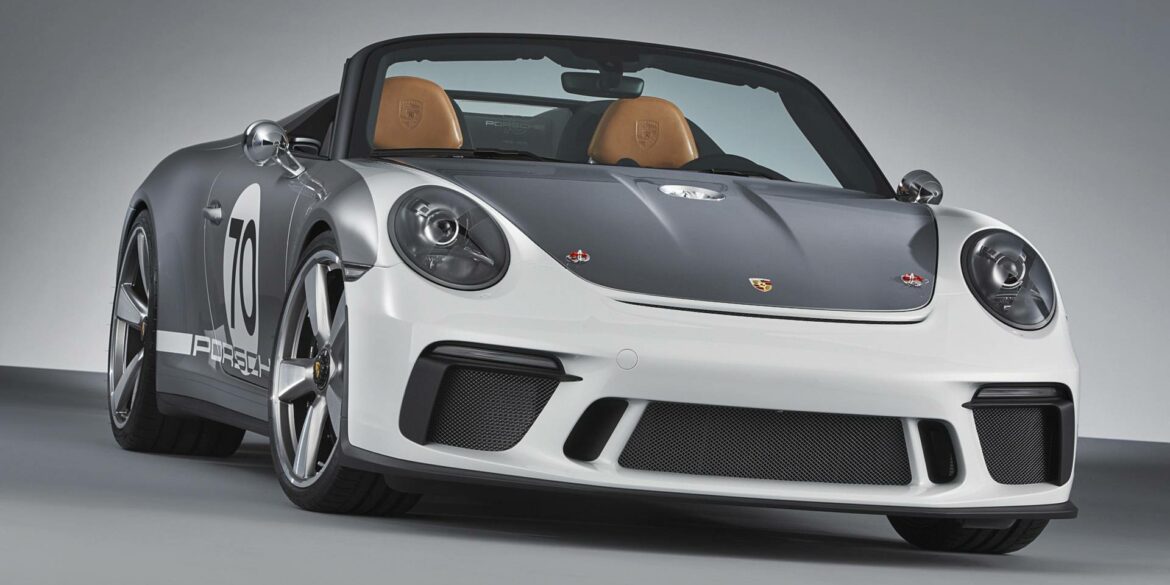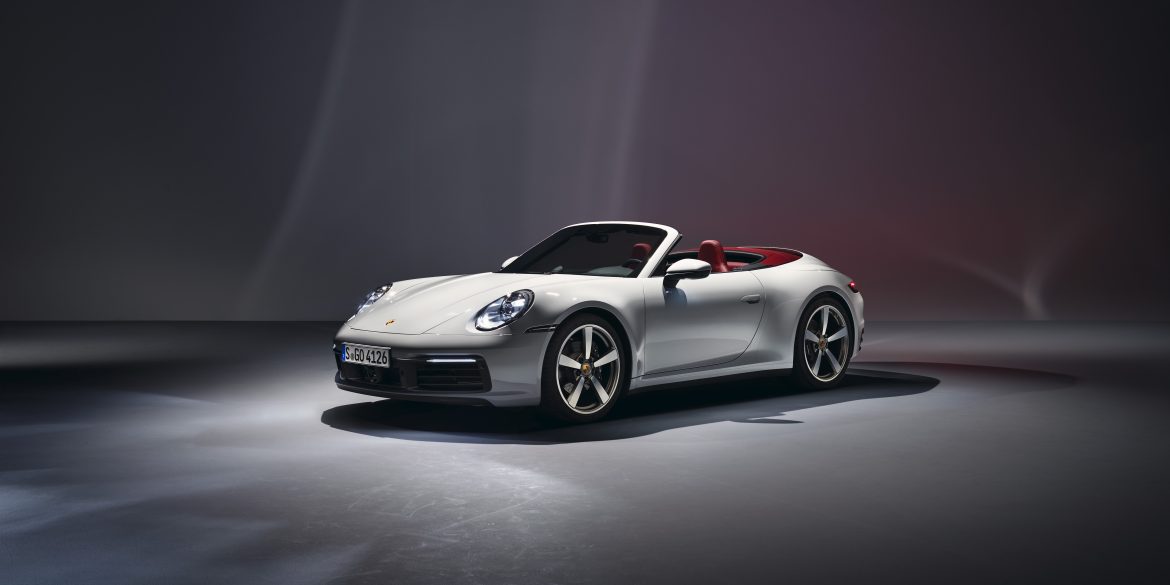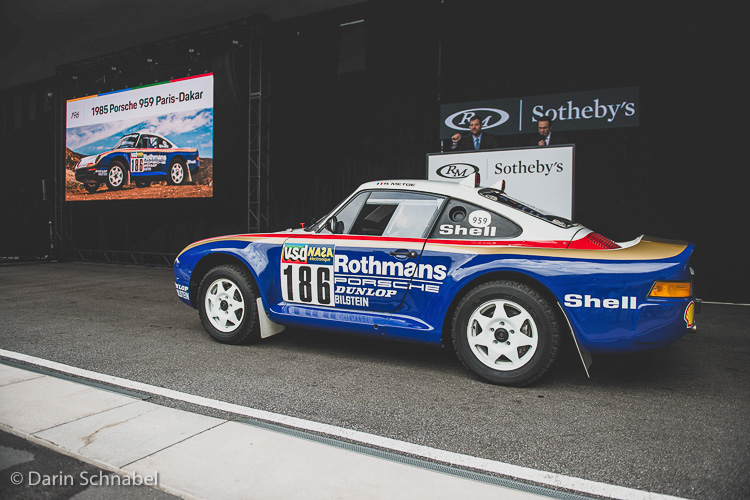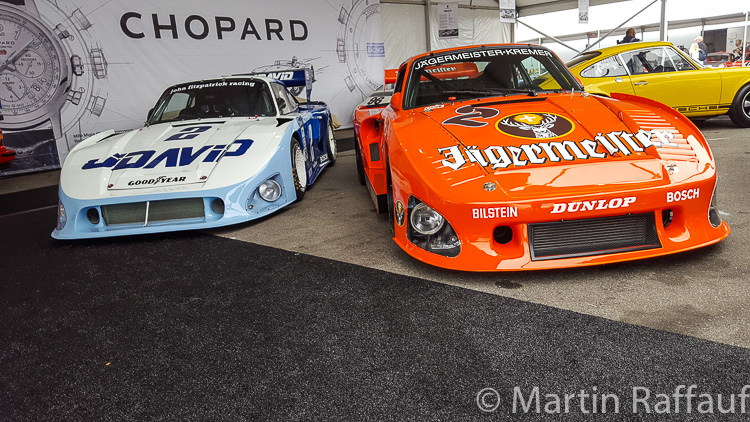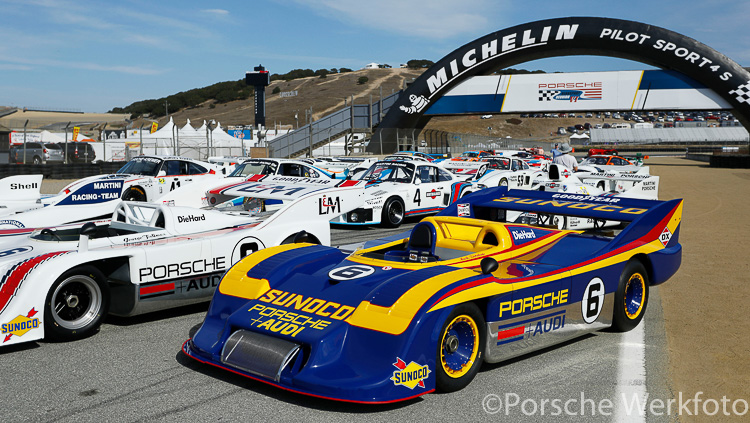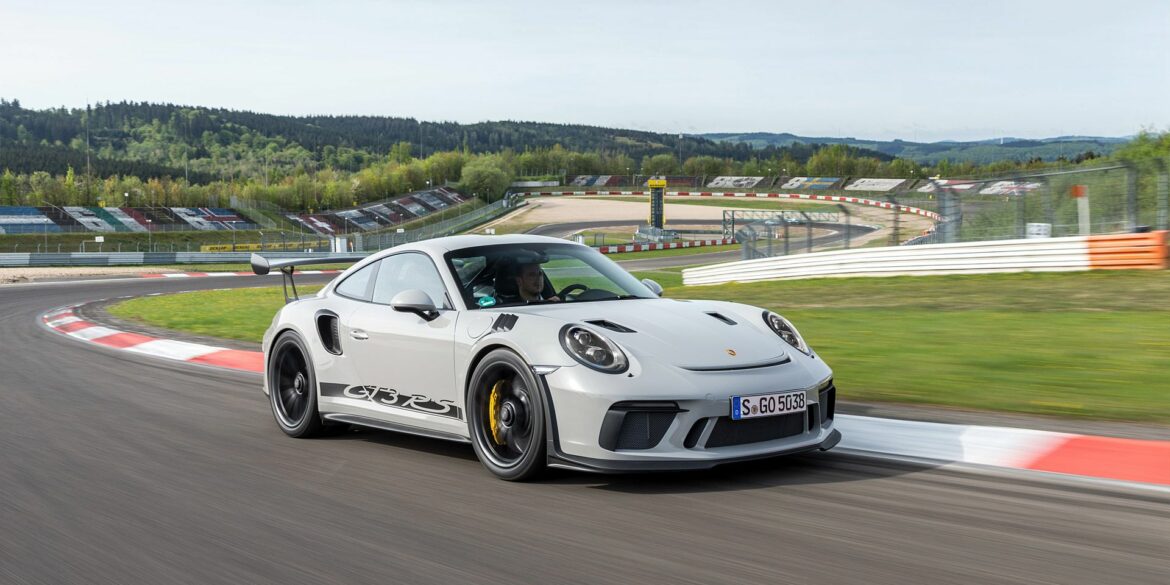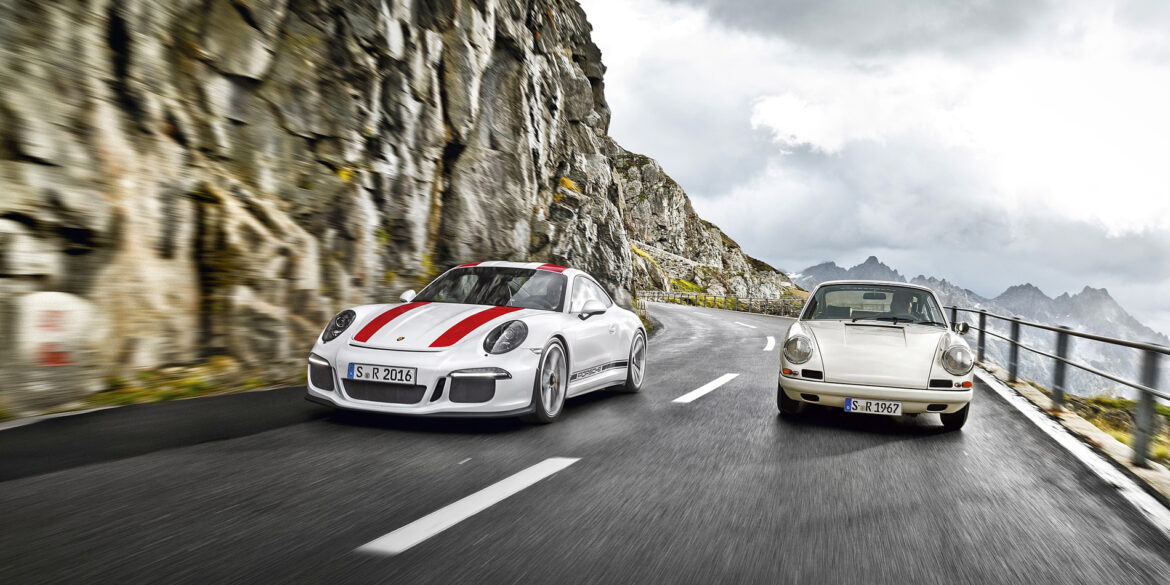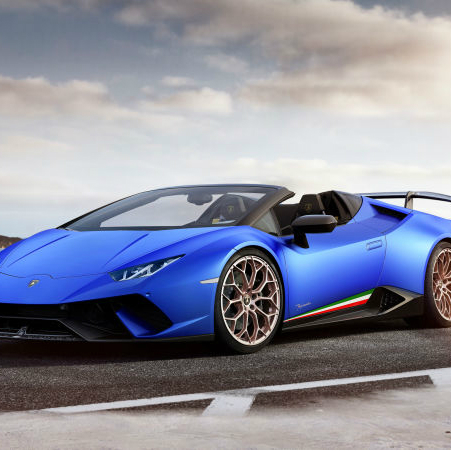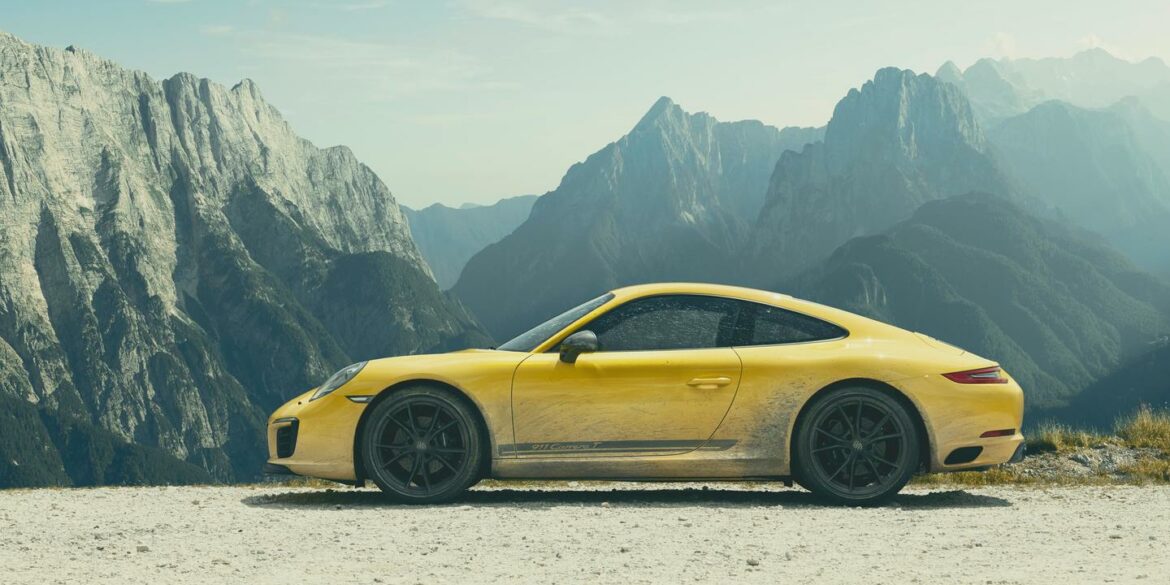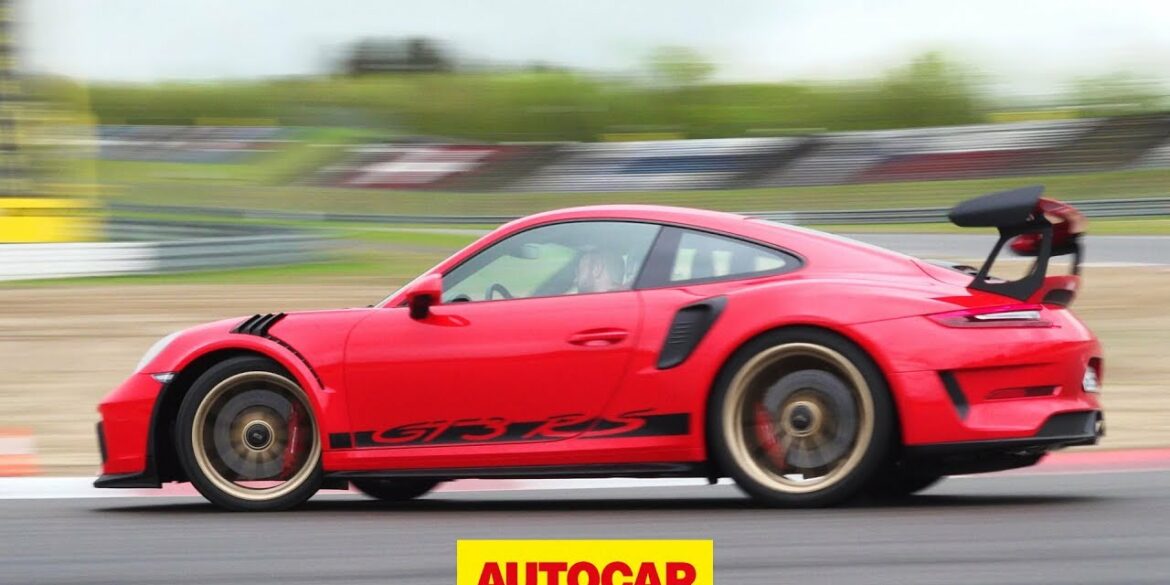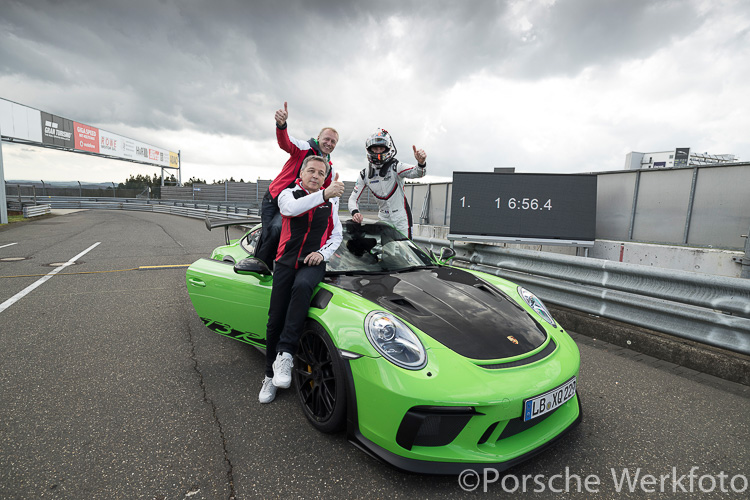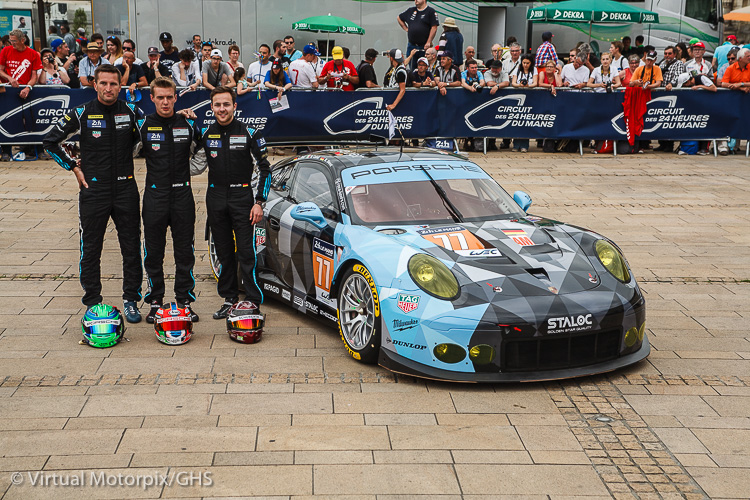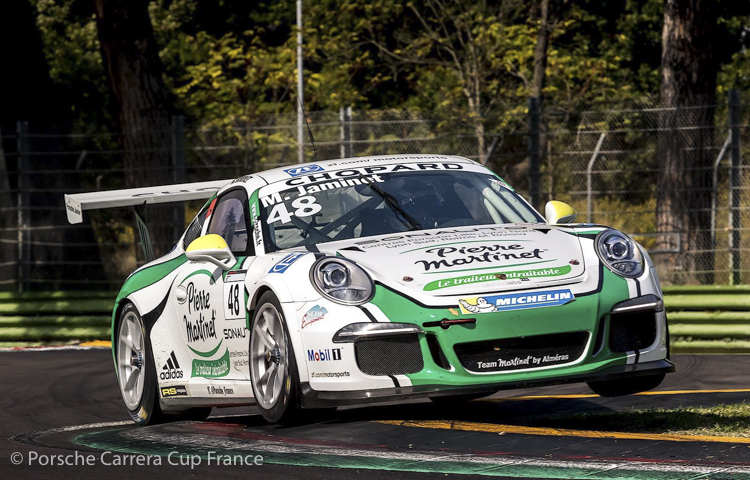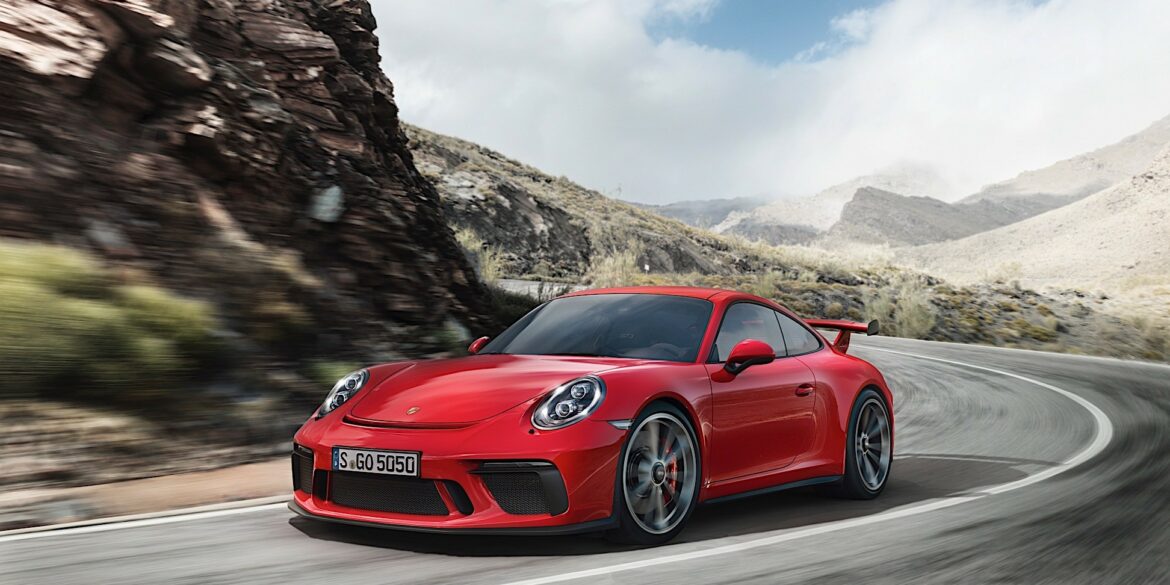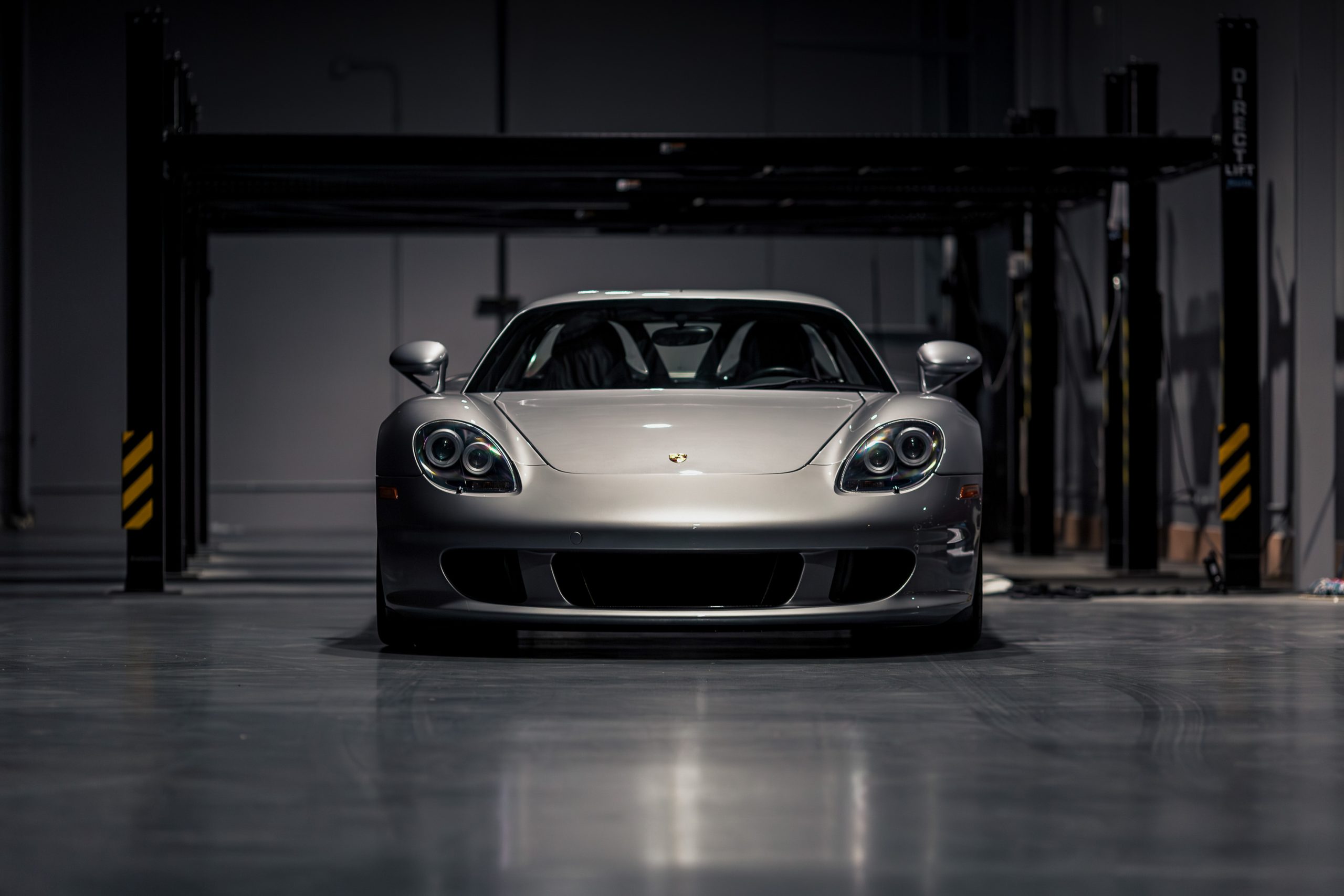Is going backward the way forward? The Porsche 911; I can’t think of another sports car that better represents an endless evolution of performance. Garnering respect since its inception in 1963, 911 enthusiasts, including myself, continue to ask, “Can Porsche keep finding ways to make it better?” But wait; while...
441 results for
gt2 rs
The “Carbon Noire Commission” is a remastered version of the 911s based on the 933-generation by Gunther Werks. The car’s name reflects its exceptional carbon fiber and black finish. The carbon fiber displays distinctive brown tones when seen in natural light. To perfectly match the natural finish of carbon fiber...
The leading Porsche of Gooding & Company’s Pebble Beach Auctions is undoubtedly this incredibly maintained 1960 Porsche RS60 (Estimate: $5,500,000 – $6,500,000). Unveiled in January 1960, the RS60 represented the ultimate evolution of Porsche’s aluminum-bodied, four-cam Spyder. Improving upon its predecessors, the RS60 featured a larger cockpit, unequal-length wishbone rear...
Porsche bests its old record The Porsche 911 GT3 RS has just set a new production car lap record at famed circuit Road America, Elkhart Lake, Wisconsin. Porsche upped the ante on its own Road America production car track record. A lap in the Type-992 Porsche 911 GT3 RS bettered...
The Porsche 993 Turbo, introduced during the 993 generation of the 911, revolutionized the sports car landscape. With a 400 horsepower twin-turbo flat-6 engine, it achieved a 0-60 mph time of just over 4 seconds and a top speed exceeding 180 mph. This outstanding performance, combined with daily drivability and...
Compared to certain marques—Italian ones, in particular—Porsche cars tend to take on a more subdued and unassuming persona. Call it German stoicism, if you will. But that’s not to say that Porsche is in any way reluctant to be distinguishable from your everyday commuter. Afterall, they produce some of the...
The rear-engine, rear-wheel drive GT2 RS celebrated its official world premiere at the Goodwood Festival of Speed in the UK which took place from June 30th to July 2nd, 2017. It was here that the world was first introduced to Porsche’s fastest and most powerful street-legal 911 ever made. A...
The Kaege Retro Turbo is based on a Porsche 993 Turbo. It offers all-wheel drive and more than 450 hp! It has that awesome tough, planted look. Open the carbon-fiber engine cover with its classic ducktail spoiler, and you are confronted by an eyeful of 993 Turbo S intercooler, which...
The 2011 Porsche 911 Speedster is a unique blend of classic features from the original Speedster model, the 356 Speedster, and enhanced performance of the contemporary 911 generation. Equipped with a 3.8-liter flat-six engine, it delivers 408 horsepower (300 kW), surpassing the 911 Carrera S by 23 horsepower. Only 356...
Offered for sale via auction on Collecting Cars a sensational track-focused performance car, upgraded by legendary Porsche specialist Manthey Racing at a cost of £64,482. Throughout its production, the Porsche 991.2-generation 911 GT3 RS stood as a pinnacle among driver’s cars. However, for those seeking an even sharper experience, Manthey...
This one-of-a-kind RWB build boasts custom hand-fitted bodywork, including modified bumpers, rocker panels, bolt-on fenders, a GT2-style rear wing, a front splitter, and dive planes. It was finished with a set of custom RWB-spec Work S1 wheels, dressed in Yokohama Advan Neova tires. The interior features custom RS-style Recaro Pole...
Sorry, but you do not have permission to view this content....
Mud and rain welcome This is a Porsche 944 that’s been converted to Safari-specification by the team of specialists over at Rindt Vehicle Design, with increased ground clearance thanks to its adjustable Nitron suspension, a sump guard, a triple spotlight pod, and a slew of other rally modifications. The Porsche 944 won a...
This 1996 Porsche 911 (993) Turbo has been modified to resemble the iconic GT2 homologation special look that every car enthusiast adores. The GT2-style bodykit gives it a fierce look, featuring aggressive front and rear bumpers, aerodynamic side skirts, larger rear wing, and bolt-on flared wheel arches. Its striking Brilliant Silver...
In January 2022, the current owner of this 1993 Porsche 964 Carrera 2 Coupe, originally delivered new in Japan, sent it to Nakai San at RWB’s headquarters in Kashiwa for a signature widebody conversion. The car was then refinished in the uncommon color of Maritime Blue and paired with a...
If there is one thing that can be said about those who are enthusiastic about, or even own, a car from our favorite manufacturer in Stuttgart, it’s that we all appreciate showing our enthusiasm in many ways. Some draw, others write, and even more take really nice pictures or videos...
The 2019 Porsche 935 is based on the popular 935/78 LM race car from the 1970s which was, given the name ‘Moby Dick’ due to its exterior shape and design – most notably the ‘whale tail’. This reimagined version certainly pays homage to those distinct characteristics, while also serving as the benefactor...
Gemballa, located in Leonberg, Germany, near Stuttgart, has been modifying Porsches since 1981 when the founder, Uwe Gemballa, established the company bearing his name. Gemballa takes an all-encompassing approach to tuning cars, covering every aspect of the vehicle. The Gemballa GTR600 is an excellent example of the company’s work. It...
Bring A Trailer is currently offering a low mileage and eye-catching example of Porsche’s 991.2 generation track-focused supercar that also comes equipped with the highly coveted and expensive Weissach Pack. When automotive enthusiasts are asked to describe the pinnacle of the Porsche 911, the 991.2 GT3 RS overwhelmingly dominates the...
Gunther Werks, the company that remasters the Porsche air-cooled 993 introduced the Project Tornado last year. It is based on a Porsche 993 ‘GT2 RS’ with a 700hp twin-turbo flat six and manual transmission. Gunther Werks enhances the analog driving experience offered by the original car, while at the same...
The 2019 Porsche 935 is based on the popular 935/78 LM race car from the 1970s which was, given the name ‘Moby Dick’ due to its exterior shape and design – most notably the ‘whale tail’. This reimagined version certainly pays homage to those distinct characteristics, while also serving as...
The London Concours, presented by Montres Breguet, has announced the first exciting feature of what is set to be another stand-out show in 2023. June’s event – firmly established as the capital’s leading summer automotive garden party – will pay homage to one of the most iconic performance models of...
When automotive enthusiasts are asked to describe the pinnacle of the Porsche 911, the 991.2 GT3 RS overwhelmingly dominates the conversation. In terms of outright performance metrics, it slots in below the new GT2 RS in the pecking order. While it may not be Stuttgart’s king of lap times, the...
Collecting Cars is proud to offer this limited edition and almost new 2019 Porsche 935. The 935 tribute car was a non-street-legal collector’s car built in homage to the original 1978 935 ‘Moby Dick’ racing car. It was built from the 911 991.2 GT3 R racing car, fitted with the engine...
DP Motorsport’s 964 RSR Recreation – “Stonegrey” Here’s another gem from the folks at DP Motorsport, this time with the focus on creating a super lightweight restomod based on a 1989 911 Carrera 2 (964). All in this car weighs just 1,050 kilograms. Known as the 964 Classic RSR Stonegrey,...
2023 Porsche 911 Variants, Reviews, Pricing, and Specs Prices Starting at $107,550 Overview “Faster, more emotional, and more connected” is how Porsche described the eighth generation Porsche 911 in their press release on November 27th 2018. The next generation of flat-six turbocharged engines has been further developed to be more...
In 2002, the entire generation of the 996 was facelifted. The Carrera 4S was introduced and got the new engine and the wider Turbo bodywork. The Carrera 4S was the perfect all around 911 when it was introduced, providing more performance than the base car without the exorbitant pricing of...
When automotive enthusiasts are asked to describe the pinnacle of the Porsche 911, the GT3 RS overwhelmingly dominates the conversation. In terms of outright performance metrics, it slots in below the new GT2 RS in the pecking order. While it may not be Stuttgart’s king of lap times, the GT3...
Kirkland residents were treated to a highlight of summer when the Porsche Club brought their best to the waterfront. It’s a display of Porsche history and current street models mixed with a few cars that serve track duty on weekends. 130 cars were registered assuring presentation of at least one...
Collecting Cars is currently offering an impressive 24-car collection of rare exotics by a single owner which houses several Porsches. The auction will run until October 23, Sunday. 1995 Porsche 911 (993) Carrera – GT2 Tribute This 1995 Porsche 911 Carrera example has been cosmetically modified and given an upgrade...
There are three very interesting low-mileage Porsches currently on offer at Bring a Trailer: 2016 Porsche 911 GT3 RS, a 2018 Porsche 911 GT2 RS Weissach, and a 2021 Porsche 911 Turbo S Coupe. 2016 Porsche 911 GT3 RS The RS was developed as a track-focused version of the GT3....
It’s abundantly clear that many people love their brand or specific model of car, bike, scooter, what have you. Doing just the most basic search on Google, you will find discussion boards, forums, Reddit sections, Facebook pages, and, much like here, entire websites dedicated to one brand. Own a Corvette?...
The 2022 Monterey Car Week is almost upon us and with it are the much-awaited auctions by Gooding and Company, Bonhams, RM Sotheby’s, and a newcomer for this year, Broad Arrow Group. With hundreds of different cars that will be on offer during the week, here are the notable Porsches...
Is the 2022 911 Porsche Sport Classic Worth The Money? The 2022 Porsche 911 Sport Classic is a combination of cars that aims to be several things. Part celebration of Porsche heritage, part engaging grand tourer, with a bit of exclusivity thrown in. The first 911 Sport Classic was built...
Watch A Legendary RWB Porsche 993 Turbo Rip Around The Nurburgring We just found this awesome video of an 993 911 Turbo built by none other than legendary Japanese tuner, Akira Nakai. RWB Porsches are revered as handcrafted one-off masterpieces, but the footage from this video proves that they aren’t...
After the success of Supercar Sunday and Superbike Sunday, Collecting Cars is proud to announce their next exciting event: the Air-Cooled Sunday! Air-Cooled Sunday is a dedicated online-only auction event specifically for air-cooled Porsches. Porsche is one of the top selling marques in Collecting Cars and the 911 attracts the attention and interests...
Porsche Unicorns Being Auctioned on May 13th Our friends at Bonhams have a special auction this weekend and for Porsche buyers it may be the holy grail of amazing cars to buy. The Monaco Sale ‘Les Grandes Marques à Monaco’ starts this Friday May 13th and there are a trio...
There is nothing pretentious about the formidable Panamera Turbo S E-Hybrid. The big sedan is all about serious power, performance and style. It is currently the second-most-powerful car in Porsche’s entire lineup, only behind the 700-hp 911 GT2 RS. Only a few rivals can match the luxury sedan in terms of raw power.
Porsche, since its inception, has always been at the forefront of engineering and advancement. This might seem a bit counterintuitive to say, seeing as the last air-cooled 911 was the Type 993 that ended sales in 1998. Yet, just about 15 years earlier, they put out the absolutely revolutionary 959,...
Every year on a late winter weekend, the Porsche world turns its focus to Southern California. Crowds converge in Los Angeles for the LA Literature, Toy, and Memorabilia Show—and for the accompanying Porsche shop tours. Thankfully, the tradition resumed in 2022 after a 2021 hiatus. Staged in the ballrooms of...
Porsche Supercars & Hypercars Pinnacle Porsche Machines Porsche 959 / Porsche 911 GT1 / Porsche Carrera GT / Porsche 918 Spyder Sure, the 911 Turbo and 911 GT2 RS are impressive “super cars” in today’s world, but they aren’t true “supercars”. This page is dedicated to those pinnacle cars, the top of the Porsche heap, the...
Porsche 911 (G-Series) (1973 – 1989) Story & History G-Model – The 2nd Generation Porsche 911 Premiere: September 12, 1973 IAA Frankfurt Starting with the model year 1968, Porsche internally assigned a letter to each model year – MY1968 was “A”, MY1969 was “B” and so on. Model year 1974...
Manthey Racing is a well-known motorsport outfit that participates actively in competitive racing. They are also responsible for churning out top-notch tuning packages to elevate the performance of road-going sports cars. In June 2021, a Porsche 911 GT2 RS fitted with a Manthey Racing performance kit lapped the 13-mile Nurburgring...
Porsche 911 (992) (2019 – Present) Story & History Type 992 – The 8th Generation Porsche 911 Porsche 911 992 Carrera Coupé/Targa/Cabriolet Official photos: 2018 November 27 / Premiere: 2018 November 27 at Porsche Experience Center Los Angeles / Market launch: 2019 (as a 2020 model) The design of the...
The 935 tribute car was a non-street-legal collector's car built in a series of 77 cars. It was built from the 911 991.2 GT3 R racing car, fitted with the engine and transmission from the 911 991.2 GT2 RS street car and with the bodykit showing some design details from the 935 cars. The problem: it was not as powerful as the 1978 935 was with even smaller engine and the modern car is much heavier, so the power-to-weight ratio was almost 60% better 40 years earlier.
Porsche 911 (997) (2004 – 2012) Story & History Type 997 – The 6th Generation Porsche 911 Official photos: 2004 May 7 / Premiere: 2004 July 16 at 9:11 pm at all the 85 Porsche centres in Germany / Market launch: 2004 July 17 On May 7, 2004, Porsche announced...
The second generation GT3 takes all that was good about it's predecessor and then improves it! Power from the GT1 derived flat-6 is up by 21 bhp to 381 bhp (with an 8200 rpm redline), ride height is lowered for increased stability and also has an upgraded braking setup, as it features a 6-piston calipers on the front. Two versions are offered, the more extreme 'Clubsport' showing it's track day colors with a full roll cage, racing seat and a 6-point harness. The 996.2 GT3 was the first GT3 marketed in the North America. The new Porsche 911 GT3 comes with all the features of half a century Porsche motorsport. It is a sports car for the purist through and through.
In 2002, the entire generation of the 996 was facelifted. The Carrera 4S Cabriolet was introduced in the lineup with the new engine and the Turbo bodywork. Many publications called the Carrera 4S the sweet spot in the 911 lineup when it was introduced, providing more performance than the base car without the exorbitant pricing of a Turbo or GT2. The Carrera 4S paired the aggressive bodywork and suspension of the Turbo with the base Carrera 4 drivetrain, though it didn't get the Turbo's huge rear wing. It’s easily identified by “Carrera 4S” badging and a large reflective strip on the rear end, spanning the gap between the taillights.
Porsche 911 (996) (1997 – 2005) Story & History Type 996 – The 5th Generation Porsche 911 Premiere: GT1 May 4, 1997 Le Mans test day, Carrera September 11, 1997 IAA Frankfurt Motor Show The designers were assigned to design the 996-generation 911 in 1993. Working under the head of...
Porsche 911 (993) (1993 – 1998) Story & History Type 993 – The 4th Generation Porsche 911 Premiere: 1993 September 9 at IAA Frankfurt motor show Clay model – note the fender design© Porsche One of the prototypes. Note the 964 wheels.© Porsche The rear lamp design that was first...
Porsche 911 The Ultimate Guide To the Ultimate Sports Car Featured / Brief History / 911 Generations / F-Series / G-Series / 964 / 993 / 996 / 997 / 991 / 992 Few cars in automotive history carry the cultural weight, engineering legacy, and emotional pull of the Porsche 911. Since its debut...
1st Generation Porsche Taycan (9J1) Story & History Official photos: Turbo & Turbo S 2019 September 4, 4S 2019 October 14 / Premiere: 2019 September 4 for invited quests in Germany, China and Canada, publicly 2019 September 12 at IAA Frankfurt motor show / Market launch: Turbo & Turbo S...
718 Cayman GT4 PDK Review This #GT4 PDK video is sponsored by NordVPN! Go to https://nordvpn.com/rbr or use code “RBR” to get a 2-year plan plus 4 free months with a huge 73% discount! Choice is a blessing. Gearbox snobbery is rampant with “purists”. Dare someone buy the paddle option,...
NEW Porsche 935 Going Flatout @ FOS Goodwood! During the Goodwood Festival of Speed I have filmed the brand new Porsche 935 (based on the 911 GT2 RS) up the hill....
NEW Porsche 935 Sound in Action: The 2019 “Moby Dick” Testing at Monza Circuit!! This was an awesome surprise and a nice dose of luck. Today during a Porsche AG test at Monza Circuit I recorded the new unveiled 2019 Porsche 935, a new-era rebirth of the famous Porsche 935...
New Porsche 935 at Goodwood This is the new Porsche 935 supercar, a track dedicated super limited edition Porsche based on the GT2 RS and designed to celebrate the original Porsche 935 of the 70’s! Here are all the details and what it’s like to drive…...
918 Spyder Testing At The Nürburgring Everybody knows about the 6 minutes 57 seconds Porsche 918 run, but did you know that a prototype 918 managed to do a Nürburgring Nordschleife lap time of 7 minutes and 14 seconds. It happened in 2012, on September 18 with Marc Lieb behind...
Porsche 991.2 GT3 RS MR Nurburgring Video Porsche set a new record for road-approved sports cars on the 20.6-kilometre Nürburgring Nordschleife in the 911 GT2 RS on September 20. The record time of 6 minutes and 47.3 seconds was achieved in the presence of a notary and surpassed even Porsche’s...
Fastest Porsche Nürburgring Nordschleife Times Some say the Nürburgring Nordschleife experience is better than sex. Every lap is so long that when the driver has covered just half of it, there’s still minutes of excitement, fear and pleasure ahead before the lap ends. It is the longest race track in...
Free to Download Porsche Coloring Pages Download scalable hand drawn vector files of different Porsche models. These Porsche coloring pages are perfect for kids getting into Porsche cars and adults who want to relax for a few hours. You can print them out and use them as coloring pages, and...
Marc Lieb and Mike Rockenfeller won the GT2 class of the Tourist Trophy at Silverstone on 15 May 2005 driving the #66 GruppeM Racing Porsche 996 GT3 RSR (3.6-litre). Here the #66 Porsche exits Luffield on its way down the old pit straight. Mike Rockenfeller became a Porsche factory driver...
Porsche 911 (996) – The Ultimate Guide 5th Generation Porsche 911 (1998 – 2005) Story / Timeline / Model Guides / Specs / Gallery / Videos / History & Details / Misc Data / FAQs / News / Features Porsche 911 (996) Timelines & Details This graphic breaks out the Type 996...
Porsche 911 (993) – The Ultimate Guide 4th Generation Porsche 911 (1994 – 1998) Story / Timeline / Model Guides / Specs / Gallery / Videos / History & Details / Misc Data / FAQs / News / Features Porsche 911 (993) Timelines & Details This graphic breaks out the Type 993...
On The Road In an automotive world in which long legacies of high-performance are continually trotted out and watered down for commercial appeal over time, it can be hard to find examples of restraint. That word might not be the most apt descriptor of Porsche 911 models that wear the...
Under normal circumstances, this year’s Rennsport Collective would have taken place at the beginning of August, when the weather was a good deal warmer and perhaps slightly more predictable. As it happens, with the onslaught of the Covid-19 pandemic, many smaller and some really big international events have been summarily...
991.1 Porsche 911 Carrera GTS (Ultimate Guide) The GTS is the fastest, most athletic model in the 911 Carrera line up. If you want even more responsive handling from your 911 you’ll have to look to the GT3 or GT3 RS, and if you’re after even more straight-line performance you’ll...
In a bit of a bait-and-switch, after revealing the new 2021 Porsche Panamera lineup just a couple of weeks ago, apparently, the top of the range is not the 621 BHP Turbo S. In fact, according to Australia’s WhichCar, the range-topping car will be a new 2021 Porsche Panemera Turbo...
Porsche 935 Tribute For Sale The 2019 Porsche 935 was a car that paid homage to a legendary car, the 1978 935/78 Moby Dick, in the best way possible. Sweeping lines, a long tail with a massive spoiler mounted above it, and the internals of a Type 991 911 GT2...
We’ve talked about the nutty-as-a-snickers-bar Porsche 911 GT2 RS MR before. In sum, it’s mental. It’s a car designed to be the absolute best that a GT2 RS can be. Now, however, as the Type 991.2 911 GT3 RS starts to wind down production in anticipation of the Type 992...
Name somebody who has a better life than Chris Harris. I dare you. Ok, maybe Lewis Hamilton does, but even then I would argue that Mr Harris edges Lewis out in every department except his pay packet. Today, the wonderful team at Top Gear brings us the best of Porsche,...
If any two letters have encapsulated Porsche’s sporting prowess over the years, it is these – RS. It is now forty-seven years since the introduction of Porsche’s first RS, the iconic 911 Carrera RS 2.7, back in 1973. For Porsche, the letters RS, which stand for Rennsport, brings to mind...
The 992.1 Porsche 911 Turbo S Cabriolet is a formidable beast. The new Turbo S comes with an all-new, 3.8 liter boxer six with two variable turbine geometry (VTG) turbochargers. The power output is a staggering 640 hp and 590 lbs-ft of torque. In keeping with previous Turbo models, the engine powers all four wheels. A new 8 speed automatic transmission with a manual mode manages the power, and can power the car to 60 mph in a hair under a claimed 2.7 seconds.
The 992.1 Turbo S comes with an all-new, 3.8 liter boxer six with two variable turbine geometry (VTG) turbochargers. The power output is a staggering 640 HP and 590 lbs-ft of torque. In keeping with previous Turbo models, the engine powers all four wheels. A new 8 speed automatic transmission with a manual mode manages the power, and can power the car to 60 MPH in a hair under a claimed 2.6 seconds. This is a staggeringly quick and capable car.
Porsche 911 Carrera RS 2.7 1973 Porsche 911 Carrera RS 2.7 Engine: 2,687 cc, air-cooled horizontally flat six Production dates: November 1972 – July 1973 Transmission: Five-speed manual Power: 210.0 bhp @ 6,300 rpm Torque: 188.0 ft lbs @ 5,100 rpm Weight: 975 kg (2149 lbs) 0-60 mph: 5.6 sec (est)...
Were you there? The 2007 FIA GT Silverstone RAC Tourist Trophy was the second race of the season in this 11-year old championship. This racing series allowed for GT race cars in two classes, GT1 and GT2, where the races were two hours long and required two mandatory pit stops....
Porsche Carrera GT The Porsche Carrera GT has become one of the most iconic and sought after Porsche models in the realm of exotic car idolization and ownership. It is hard to believe, that things didn’t really start off that way. When the Porsche Carrera GT was released in 2004, it...
Feast Your Eyes on These Porsche 935 Tribute Colors The modern 935 Clubsport from Porsche is a car that’s simply to die for. It’s drop-dead gorgeous and features a 700 hp and a body reminiscent of the legendary Porsche 935/78. Now the modern car will really look the part thanks...
Running in the GT2 class of the FIA GT Championship, the #53 Renauer Motorsport Team Porsche 911 GT3 RSR (Type 996, 3.6-litre) was driven by the Austrian pairing of Manfred Jurasz and Hans Knauss together with the Swiss driver Theo Heutschi. This was the opening round of the 2006 season...
Top down summertime driving in the current 911 Carrera 4S Cabriolet is about as good as it gets. It checks all of the right boxes, as while it has matured into almost a GT-type car; it still boasts more performance than ever. Like the rest of Carrera S models, the Carrera 4S Cabriolet is powered by the same 3.0-liter twin-turbo flat-six that makes 443 horsepower and 390 ft lbs of torque. It comes standard with the same eight-speed twin-clutch automatic transmission.
Christmas shoppers in Los Angeles on December 8 had a special selection at the Petersen Museum as RM Sotheby’s hosted its last auction of 2018. The RM Sotheby’s staff assembled 68 vehicles and 56 items of memorabilia and nostalgia for the auction. The automobiles on offer spanned many marques and...
Porsche is celebrating their 70 years in the making with the Porsche 911 Speedster Concept car. With the Carrera Cabriolet 4 body as its canvas, the Speedster concept pays homage to its predecessors - most notably, the Porsche 356 1500 Speedster. The limited production Speedster is immediately distinguishable from the current 911 line-up, with its “double bubble” tonneau cover and other unique offerings and design tweaks.
The Porsche 911 Carrera S Cabriolet also features a heated glass rear window and integrated magnesium support elements. The automatic fabric top opens and closes at speeds of up to 31 miles per hour in just 12 seconds – one second quicker than before. The 992 Carrera S Cabriolet gets a twin-turbo 3.0-liter flat-six with 443 bhp and 390 ft lbs of torque. That is 29 more horsepower and 22 more ft lbs of torque than the outgoing model.
Lot #196, the 1985 Porsche 959 Paris-Dakar, outstripped its pre-sale estimate at RM Sotheby’s Porsche 70th Anniversary Auction at the Porsche Experience Centre Atlanta. With a pre-sale estimate of between $3.0m-3.4m, the 959 sold for a final $5,945,000, almost doubling its estimate. This was just one of the vehicles at...
The Evolution of the Porsche 911 Porsche 911 Generations First Generation (1963-1989) Porsche 964 (1989-1994) Porsche 993 (1994-1998) Porsche 996 (1998-2004) Porsche 997 (2004-2011) Porsche 991 (2011-2019) Porsche 992 (2019 – ) Telling Generations Apart Born in 1963, the Porsche 911 has become a legend. An iconic design that is...
It’s hard to know where to begin when writing a report on Porsche Rennsport Reunion VI. It was both an emotional and a sensory overload! A reunion with people not seen for a while, and the historical impact of all the rare cars. This was the sixth iteration put on...
Porsche’s sixth edition of the by now much-anticipated Rennsport Reunion kicked off on Wednesday 26 September 2018. You could have expected that this would be a really big one for Porsche, with it being their 70th anniversary year, but the Stuttgart manufacturer really pushed the boat out with this one....
The Ultimate Guide to the Fastest Porsches What’s Here Fastest Porsches by 0 to 60 mph by 1/4 Mile Time by Top Speed by Most Powerful In Detail Fastest Porsche (new & old) Fastest Porsche 911 (new & old) Fastest 911 Turbo (new & old) Nurburgring Porsche Records We recently...
I received the email inviting me to join the judges panel for the 2018 Concours Masters Celebration of 70 Years of Porsche on Saturday, 1st September. It didn’t take long for me to accept as this would be an opportunity to get up close to some stunning machinery, and to...
Matt Prior from Autocar nails the 991.2 GT3 RS: “While I don’t think the 3 communicates any better than a 2, the messages it does transmit are superior: you can feel that it’s lighter, more willing to turn, easier and more satisfying to ease onto the throttle and keep it pinned. It’s why this car is only a few seconds slower than a 2RS around the Nürburgring Nordschleife despite being almost 200bhp down.” He goes on... “And in the form of the GT3 RS it goes into creating - little by little, detail by detail - what might just be the best driver’s car currently on sale.”
The All Time Greats – 70 Best Porsches of All Time (Ultimate List) Clearly we have been a bit of a “best of Porsche” run lately. With Porsche celebrating 70 years in 2018 we felt it was a good time to dive deep into Porsche history and pick our favorite...
https://www.youtube.com/watch?v=65jW-FVAd2o This week, a road legal 911 GT3 RS set a lap time of 6:56.4 minutes with the 520-hp race-bread Porsche at the Nürburgring-Nordschleife circuit. This makes the GT3 RS the third quickest road car to ever lap the Nordschleife, right behind the Lamborghini Huracan Performante and the 911 GT2...
Definitive List of the Best Racing Cars Porsche Has Ever Raced Porsche Race Cars Porsche 917 Porsche 550 Spyder Porsche 718 Porsche 904 Porsche 935/77 Porsche 935/78 ‘Moby Dick’ Porsche 911 RSR 2.14 Turbo Porsche 911 GT3 R Hybrid 2.0 Porsche 919 Hybrid Porsche 911 GT1 98 Porsche 936 Spyder...
To the untrained eye, the Carrera T may appear to be a bare-bones and sparingly equipped 911 at first glance. The purpose of the T is to create a driver-focused 911, equipped with only the necessities required to appeal to those of a purist’s ilk. The Carrera T employs the same power plant used in the current base Carrera - a twin-turbocharged 3.0L flat-six with 370 horsepower and 331 lb-ft of torque. A 7-speed manual transmission comes standard with the T, along with a shorter final-drive ratio and the limited-slip differential. Porsche Sport Exhaust (PSE) is also standard. PASM sport suspension comes standard in the T, which lowers the chassis by 0.4 inches relative to the base Carrera and allows for two modes of dampening.
A Thorough Review of the 991.2 GT3 RS The 991.2 GT3 Rs comes with a power upgrade to the 911 GT3’s 4.0-litre engine – which is basically a Cup race car engine – taking it to 513bhp (520 metric hp). It revs to 9000rpm – that’s worth hearing, by the...
On 16 April, the Porsche 911 GT3 RS set another benchmark for road-approved sports cars at the Nürburgring-Nordschleife circuit in Germany. Porsche works race driver Kévin Estre set a lap time in 6:56.4 minutes with the 520-hp GT3 RS. The Frenchman’s lap time was 24 seconds faster than the best...
Located in the town of Ummendorf, approximately 130km south east of Stuttgart, Proton Competition has been working on Porsche race cars for twenty-one years. Motor racing started in the family when Gerold Ried, father to Michael and Christian, began racing with some friends in 1994 and 1995 with a Porsche...
Review Summary: With a fuel efficient V6 engine, the midsize SUV offering from Porsche has a great interior design, with a distinct Porsche feel; lots of buttons, lots of soft-touch materials, and a great-looking layout. However, the fuel efficient engine does lack the oomph to launch the Cayenne into greatness....
Over 350 Cars! We Compiled the Porsche Performance Numbers & Specs for Every Porsche What’s Here 911 Models Porsche 911 Misc Car Porsche 356 Porsche 550 Porsche 914 Porsche 924 Porsche 928 Porsche 944 Porsche 968 Porsche Boxster Porsche Cayman Porsche Taycan SUV & Sedan Porsche Cayenne Porsche Panamera Porsche...
Philippe Alméras is the owner of Team Martinet by Alméras, one of the main Porsche team contenders in the 2017 racing calendar: Porsche Mobil 1 Supercup, Porsche Carrera Cup France, French GT4 Championship, VdeV Endurance Series, Porsche Club Racing and more. The name Alméras is linked from the very beginning...
The new Porsche 911 GT3 carries the same four-litre flat engine from the GT3 RS with its power increased by 25hp for a new total of 500hp. The chassis is also redesigned and now features a rear-axle steering and a lighter construction. The Porsche 911 GT3 type 991.2 comes in at 1,430 kg when its tank is full. Although it is a bit heavier than the previous model, it still manages to reach 0-100km/h in just 3.4 seconds and reach top speeds of 318km/h. What’s more interesting here is that Porsche finally decided to switch back to a 6-speed manual gearbox (7-speed PDK is standard).


